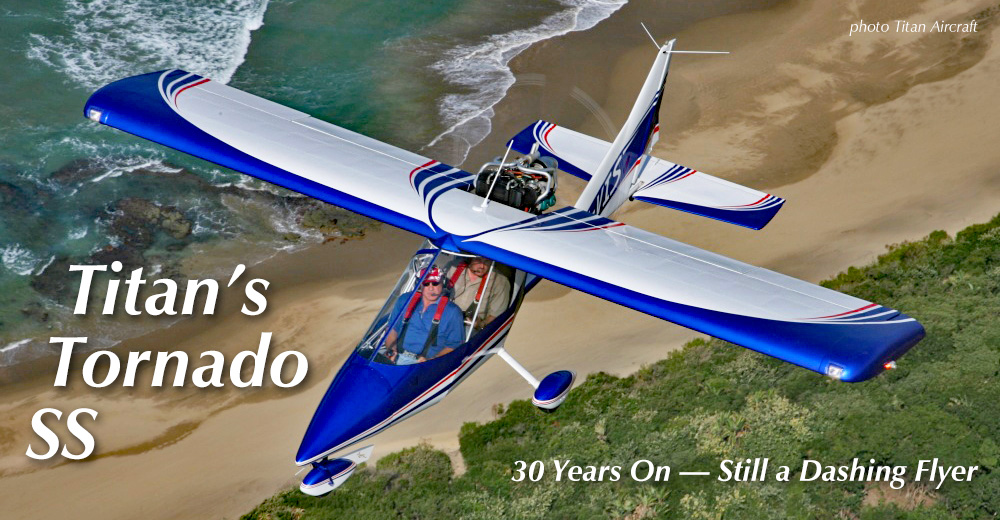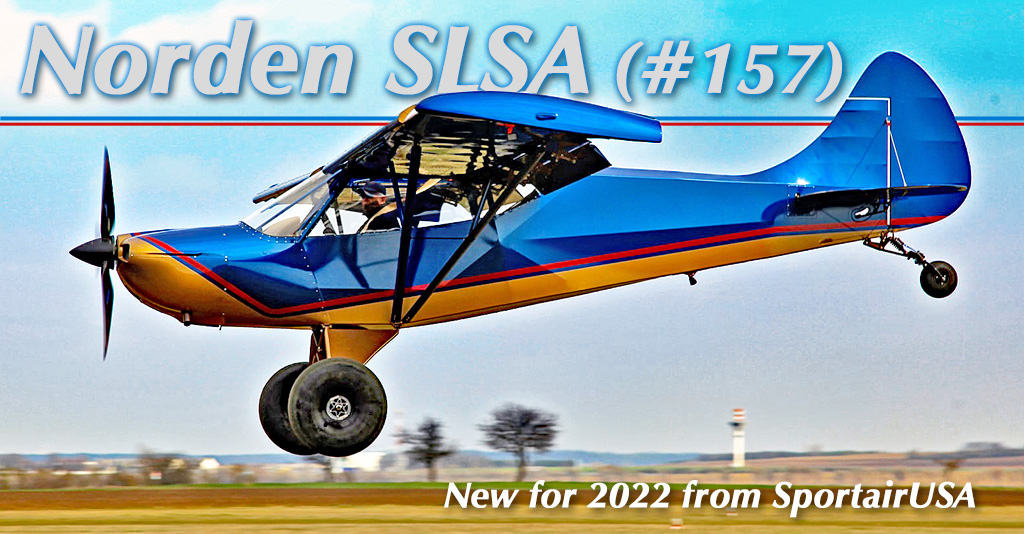
Welcome to the newest Special Light-Sport Aircraft in the fleet: Savage Norden. The first example is in the United States and headed to its new owner. Norden is #157 on our SLSA List. “It is the best of the several models of LSA that Zlin has ever made,” SportairUSA boss, Bill Canino said of Norden. He proudly announced that Norden received its FAA certificate of airworthiness as a Special LSA. SportairUSA is the distributor and service center for Savage and other sport aircraft in the USA. Because the first customer’s Norden was used to gain FAA acceptance as a Special LSA (that included logging 20 hours), the owner is understandably anxious to receive his new bird so SportairUSA will not be attending Sun ‘n Fun with the model. The first public viewing will be this summer at AirVenture Oshkosh 2022. U.S. Norden #1 will be flown in May to its new home in McCarthy, Alaska, at the foot of the Wrangell Mountains Norden is “Best Yet” About two years ago, Zlin first announced Norden, then with the 100 horsepower 912iS.


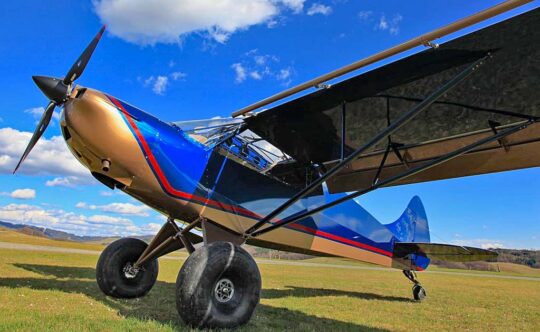 "It is the best of the several models of LSA that Zlin has ever made," SportairUSA boss, Bill Canino said of Norden.
He proudly announced that Norden received its FAA certificate of airworthiness as a Special LSA. SportairUSA is the distributor and service center for Savage and other sport aircraft in the USA.
Because the first customer's Norden was used to gain FAA acceptance as a Special LSA (that included logging 20 hours), the owner is understandably anxious to receive his new bird so SportairUSA will not be attending
"It is the best of the several models of LSA that Zlin has ever made," SportairUSA boss, Bill Canino said of Norden.
He proudly announced that Norden received its FAA certificate of airworthiness as a Special LSA. SportairUSA is the distributor and service center for Savage and other sport aircraft in the USA.
Because the first customer's Norden was used to gain FAA acceptance as a Special LSA (that included logging 20 hours), the owner is understandably anxious to receive his new bird so SportairUSA will not be attending 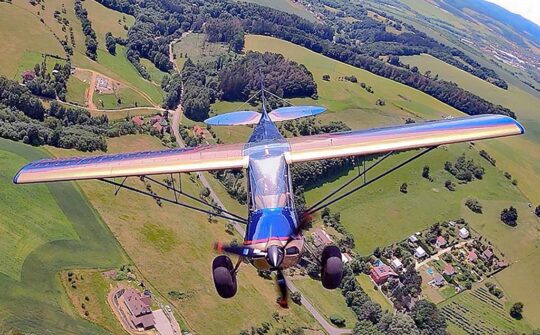 About two years ago,
About two years ago, 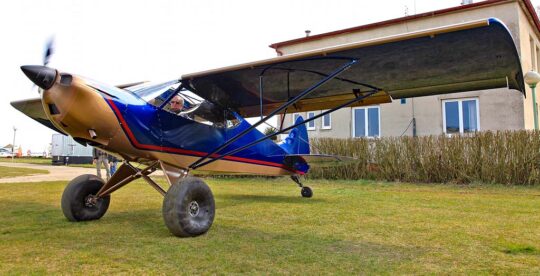 Bill worked with FAA representatives to gain acceptance during the fall and winter of 2021-22. “We appreciate the attention to safety that the FAA brings to this process,” said Canino, whose company, SportairUSA, has been a pioneer in the field of Light-Sport Aircraft, serving the experimental and recreational aviation community since 1990.
Bill worked with FAA representatives to gain acceptance during the fall and winter of 2021-22. “We appreciate the attention to safety that the FAA brings to this process,” said Canino, whose company, SportairUSA, has been a pioneer in the field of Light-Sport Aircraft, serving the experimental and recreational aviation community since 1990.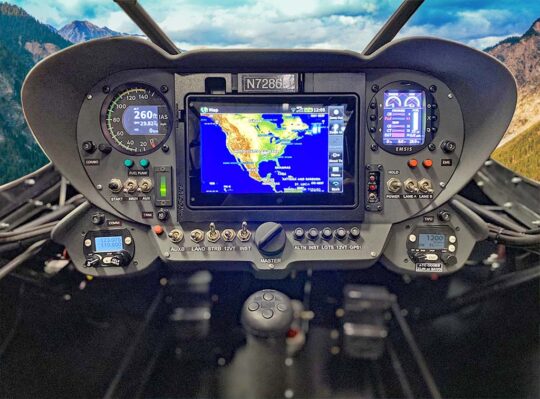 "The design of Norden incorporates classic short takeoff and landing (STOL) elements together with innovative concepts tested and proved in previous Zlin products," said Bill. "Pilot feedback, from the Alaskan bush to the deserts of South Africa, played an important role in Zlin’s evolution as a designer and manufacturer of STOL aircraft."
"The design of Norden incorporates classic short takeoff and landing (STOL) elements together with innovative concepts tested and proved in previous Zlin products," said Bill. "Pilot feedback, from the Alaskan bush to the deserts of South Africa, played an important role in Zlin’s evolution as a designer and manufacturer of STOL aircraft."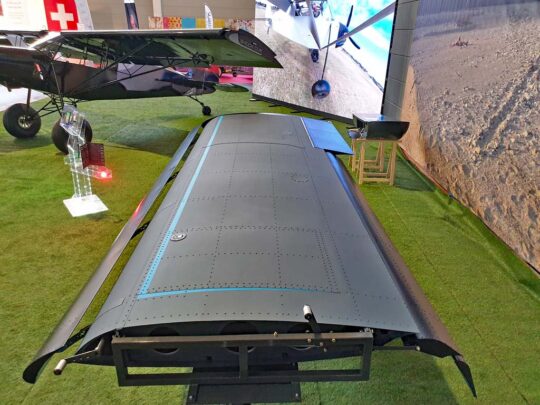 According to Zlin’s founder, Pasquale Russo, “The design target was to offer to the market a new version of our plane with improved STOL performance and with these main characteristics: full metal wing, electrically-operated retractable slats, double slotted flaps, extended range, optimized cruise and low-speed flight characteristics, a wide flight envelope and low pilot workload.” (See extensive feature list below.)
According to Zlin’s founder, Pasquale Russo, “The design target was to offer to the market a new version of our plane with improved STOL performance and with these main characteristics: full metal wing, electrically-operated retractable slats, double slotted flaps, extended range, optimized cruise and low-speed flight characteristics, a wide flight envelope and low pilot workload.” (See extensive feature list below.)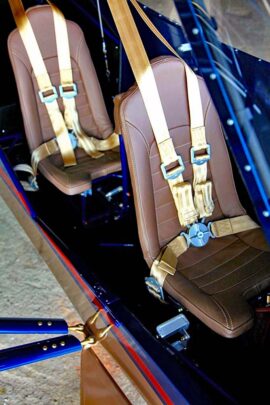
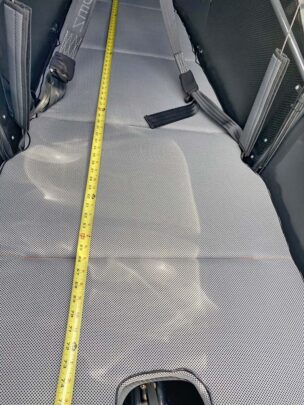
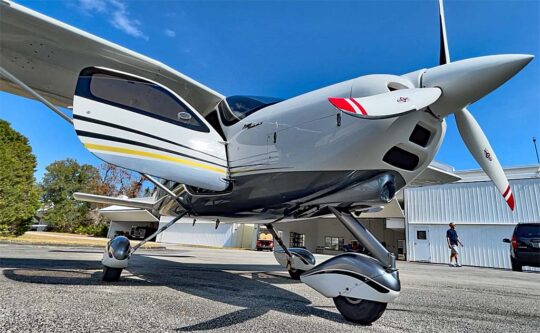 Most of us, including your author, tend to fly only fully-built aircraft while another group of equal size enjoys the building process — or at least this is a more affordable path to airplane ownership.
Roger truly enjoys his '650 on which he mounted a potent 130-horsepower
Most of us, including your author, tend to fly only fully-built aircraft while another group of equal size enjoys the building process — or at least this is a more affordable path to airplane ownership.
Roger truly enjoys his '650 on which he mounted a potent 130-horsepower 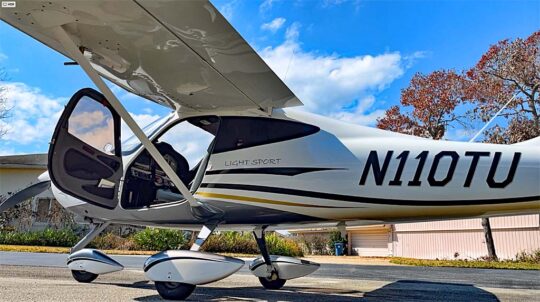 With a whole stable of handsome aircraft —
With a whole stable of handsome aircraft — 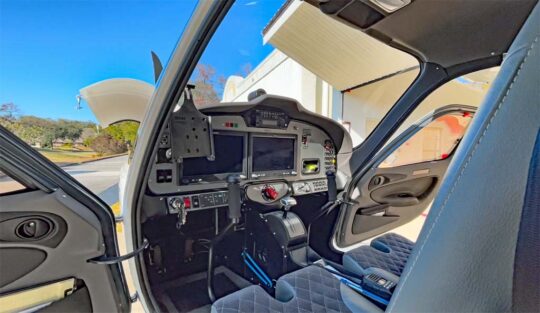 Although Roger scored a superbly-equipped, low-time P2008 (and paid a bit more for it), at least one other for sale, a 2009 model is asking $117,500 in early 2022. Honestly, a used example is a way many pilots could acquire one of these sharp airplanes.
Roger is a LSR-M LSA mechanic. Open the engine compartment doors and you'll see an engine so clean and tidy it looks like it has never been run. If you have the mechanical aptitude and training Roger has, your airplane ownership can be much more affordable. (Note that Roger also does maintenance work on the
Although Roger scored a superbly-equipped, low-time P2008 (and paid a bit more for it), at least one other for sale, a 2009 model is asking $117,500 in early 2022. Honestly, a used example is a way many pilots could acquire one of these sharp airplanes.
Roger is a LSR-M LSA mechanic. Open the engine compartment doors and you'll see an engine so clean and tidy it looks like it has never been run. If you have the mechanical aptitude and training Roger has, your airplane ownership can be much more affordable. (Note that Roger also does maintenance work on the 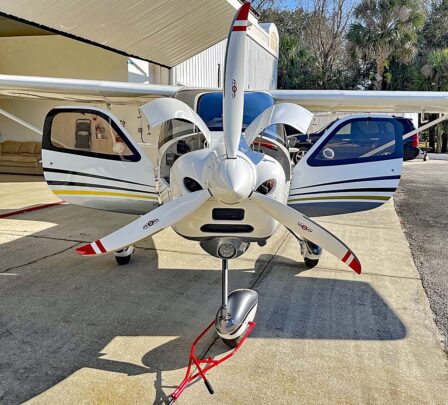 Tecnam's wing for the sleek P2008 is fairly conventional constant-chord shape except for a pinching at the wingroot/fuselage junction. Outboard, the trailing edge is gently tapered with slightly upturned wing tips. Frise ailerons span the outboard sections with discreet slotted flaps inboard. A single lift strut on each side braces the wings to the lower fuselage. On its tail P2008 has a stabilator-style constant-chord tailplane. Its vertical fin is gracefully swept.
Although Roger's P2008 has the turbo 914 engine, most P2008s are powered by Rotax's 912ULS. While Roger's P2008 has a three-blade prop, most models come with a two-blade propeller.
Cloth-covered seats match a fully-appointed interior that bares no metal or composite, hiding all linkages out of sight. An aft baggage space can hold 44 pounds. For P2008, Tecnam engineers enlarged both the cabin and doors aiding entry and exit and making your time aboard more comfortable. Either seat can be moved fore and aft at any time.
Fixed tricycle gear uses spring cantilever main legs and a castoring, non-steerable nosewheel with compressed rubber suspension. You steer on the ground using differential braking.
P2008's first flight took place September 30, 2008 and the first P2008 was delivered to the U.S. in December 2009.
Tecnam's wing for the sleek P2008 is fairly conventional constant-chord shape except for a pinching at the wingroot/fuselage junction. Outboard, the trailing edge is gently tapered with slightly upturned wing tips. Frise ailerons span the outboard sections with discreet slotted flaps inboard. A single lift strut on each side braces the wings to the lower fuselage. On its tail P2008 has a stabilator-style constant-chord tailplane. Its vertical fin is gracefully swept.
Although Roger's P2008 has the turbo 914 engine, most P2008s are powered by Rotax's 912ULS. While Roger's P2008 has a three-blade prop, most models come with a two-blade propeller.
Cloth-covered seats match a fully-appointed interior that bares no metal or composite, hiding all linkages out of sight. An aft baggage space can hold 44 pounds. For P2008, Tecnam engineers enlarged both the cabin and doors aiding entry and exit and making your time aboard more comfortable. Either seat can be moved fore and aft at any time.
Fixed tricycle gear uses spring cantilever main legs and a castoring, non-steerable nosewheel with compressed rubber suspension. You steer on the ground using differential braking.
P2008's first flight took place September 30, 2008 and the first P2008 was delivered to the U.S. in December 2009.
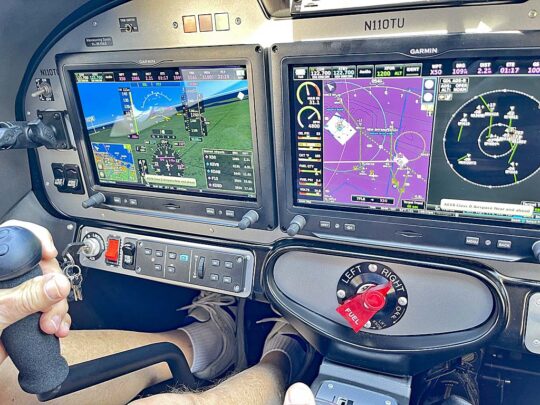 All Tecnam models are revered for their "natural" handling. This is one of the most straightforward-flying LSA in the fleet. It can function as a capable cross country aircraft or could be used in flight training, though probably not with the turbocharged Rotax 914.
In my flight, the turbocharger added a very noticeable boost to depart the runway and enhances initial climb rate generously. We saw more than 1,200 feet per minute at near-sea-level operation. When you increase power, a detent you can feel with your throttle hand alerts you that the turbo is about to be engaged. After five minutes of use — enough to get to 5,000 feet or so — you need to back off the turbo but could employ it again for enroute climb or operations at very high elevation airports. While a more complex installation with somewhat higher maintenance needs, Roger says the 914 is quite easy to operate.
No wonder Tecnam has risen to be the largest builder of very light aircraft. If you are in the market for a luxury-class LSA, a P2008 on the used market could be your next airplane.
All Tecnam models are revered for their "natural" handling. This is one of the most straightforward-flying LSA in the fleet. It can function as a capable cross country aircraft or could be used in flight training, though probably not with the turbocharged Rotax 914.
In my flight, the turbocharger added a very noticeable boost to depart the runway and enhances initial climb rate generously. We saw more than 1,200 feet per minute at near-sea-level operation. When you increase power, a detent you can feel with your throttle hand alerts you that the turbo is about to be engaged. After five minutes of use — enough to get to 5,000 feet or so — you need to back off the turbo but could employ it again for enroute climb or operations at very high elevation airports. While a more complex installation with somewhat higher maintenance needs, Roger says the 914 is quite easy to operate.
No wonder Tecnam has risen to be the largest builder of very light aircraft. If you are in the market for a luxury-class LSA, a P2008 on the used market could be your next airplane.
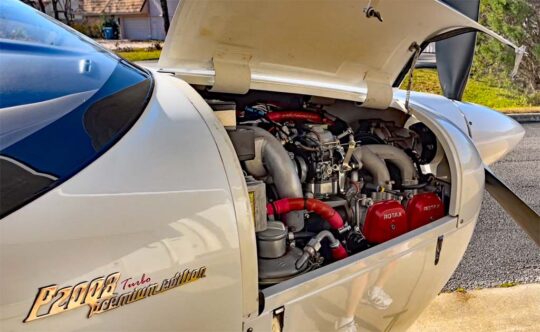
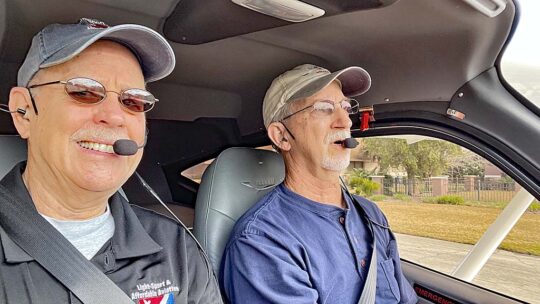
 More information on Tecnam's P2008 from a video recorded earlier.
https://youtu.be/bYjLzHkVRo8
More information on Tecnam's P2008 from a video recorded earlier.
https://youtu.be/bYjLzHkVRo8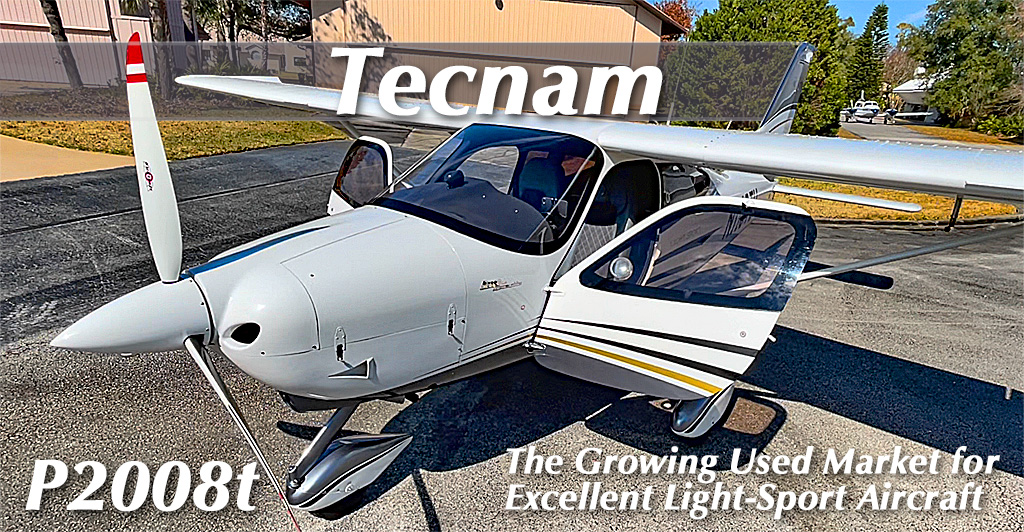
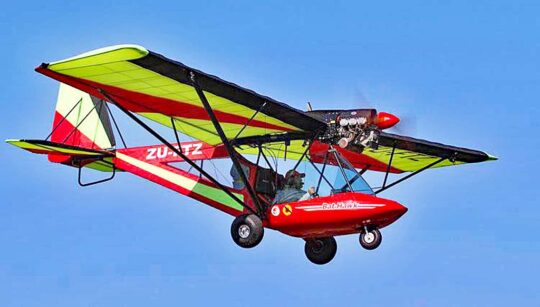 Bat Hawk is a well-established, conventional microlight-style light aircraft powered by a Rotax 912 that helps it provide "sensational" performance.
Bat Hawk is a well-established, conventional microlight-style light aircraft powered by a Rotax 912 that helps it provide "sensational" performance.
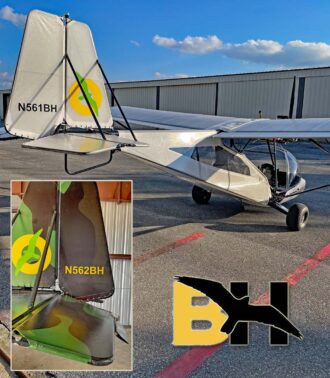 Such working duties should not surprise anyone since
Such working duties should not surprise anyone since 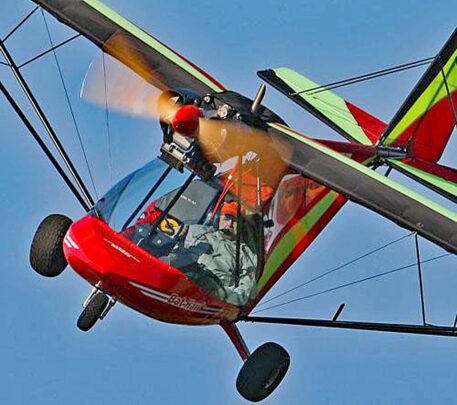 Bat Hawk's engine and prop are mounted in a tractor position at wing level. Its tailplane is conventional in location and layout. Tricycle gear has a steerable nose-wheel. Bat Hawk's wing is strut- and lift-wire braced. Once common, wire bracing has largely disappeared from fixed wing but it remains a very strong configuration.
Bat Hawk's wing is built around two larger aluminum tubes forming the spars, one at the leading edge and one at the rear edge of the wing as is very common of aircraft with this construction. Sewn Dacron sailcloth covers all wing and tail surfaces plus the aft cockpit fairing.
Bat Hawk uses full-span flaperons attached to the rear spar; flaperons work independently as ailerons and together as flaps. There is no flap position indicator but approximate settings can be determined from the flap selector angle. Maximum flap movement is restricted by a limit stop mounted on the flap lever quadrant.
Bat Hawk's engine and prop are mounted in a tractor position at wing level. Its tailplane is conventional in location and layout. Tricycle gear has a steerable nose-wheel. Bat Hawk's wing is strut- and lift-wire braced. Once common, wire bracing has largely disappeared from fixed wing but it remains a very strong configuration.
Bat Hawk's wing is built around two larger aluminum tubes forming the spars, one at the leading edge and one at the rear edge of the wing as is very common of aircraft with this construction. Sewn Dacron sailcloth covers all wing and tail surfaces plus the aft cockpit fairing.
Bat Hawk uses full-span flaperons attached to the rear spar; flaperons work independently as ailerons and together as flaps. There is no flap position indicator but approximate settings can be determined from the flap selector angle. Maximum flap movement is restricted by a limit stop mounted on the flap lever quadrant.
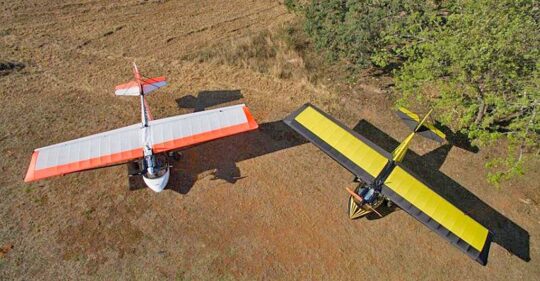 Side by side seating offers full dual control based on a center stick that no doubt makes entry a bit easier. Bat Hawk's rudder is actuated by cables running from the pedals. Ailerons are controlled by cables from a torque tube connected to the central control stick, which has a built-in control stop. The elevator is actuated by a push/pull cable attached directly to the control stick with built-in stops.
Manufacturer Micro Aviation said a wide track undercarriage has the main wheels supported by an inverted ‘V’ shaped glass fiber that provides suspension. Bat Hawk's nose wheel is supported by two hydraulic shock absorbers that "allows Bat Hawk to operate on rough terrain." Black Max disc brakes are actuated using a hand lever on the control stick. Differential braking is not available.
Side by side seating offers full dual control based on a center stick that no doubt makes entry a bit easier. Bat Hawk's rudder is actuated by cables running from the pedals. Ailerons are controlled by cables from a torque tube connected to the central control stick, which has a built-in control stop. The elevator is actuated by a push/pull cable attached directly to the control stick with built-in stops.
Manufacturer Micro Aviation said a wide track undercarriage has the main wheels supported by an inverted ‘V’ shaped glass fiber that provides suspension. Bat Hawk's nose wheel is supported by two hydraulic shock absorbers that "allows Bat Hawk to operate on rough terrain." Black Max disc brakes are actuated using a hand lever on the control stick. Differential braking is not available.
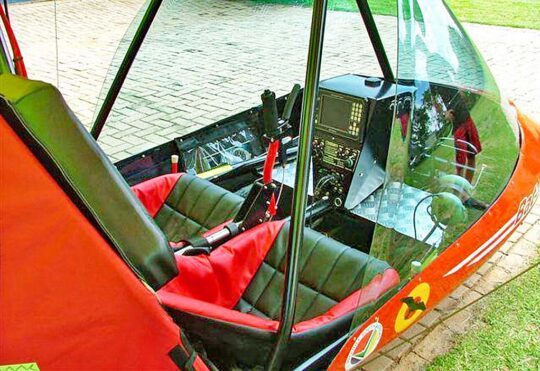 Instrumentation is provided by an also South African MGL EMS (sold and serviced in America by
Instrumentation is provided by an also South African MGL EMS (sold and serviced in America by 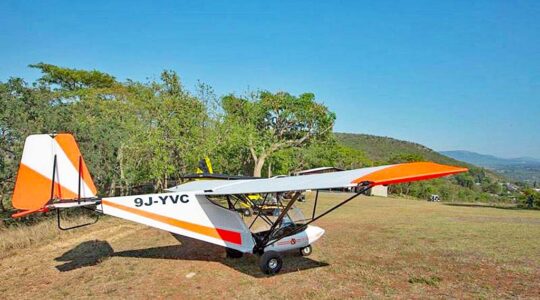 For more info, Bathawk in America is finishing their new website, so email importer,
For more info, Bathawk in America is finishing their new website, so email importer, 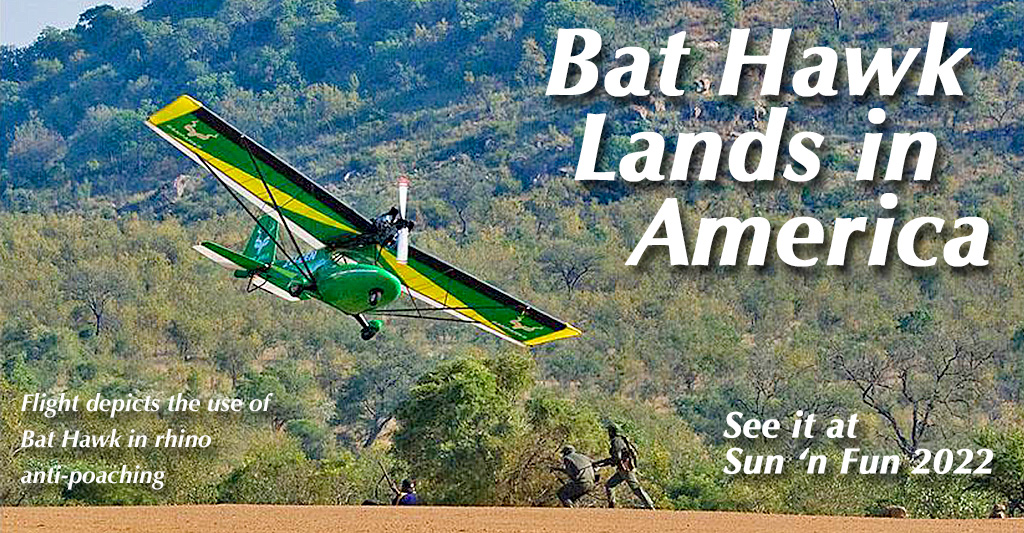
 Now that 2021 is historical and following two years of Covid uncertainty and business interruptions, many readers can breathe a sigh of relief for an better 2022.
We have two full years remaining before FAA's Mosaic regulation becomes active. During that time you'll need to respond to the proposal I predict we will see at Oshkosh 2022 (only seven months away). Until then, what might happen in the world of light aviation?
I don't know any better than you. The future is as unknowable as ever. So many things can happen …who expected Covid-19? With my eye to the sky I'm pleased to start the new year out with some fresh news. Here are five stories to kick off 2022.
Now that 2021 is historical and following two years of Covid uncertainty and business interruptions, many readers can breathe a sigh of relief for an better 2022.
We have two full years remaining before FAA's Mosaic regulation becomes active. During that time you'll need to respond to the proposal I predict we will see at Oshkosh 2022 (only seven months away). Until then, what might happen in the world of light aviation?
I don't know any better than you. The future is as unknowable as ever. So many things can happen …who expected Covid-19? With my eye to the sky I'm pleased to start the new year out with some fresh news. Here are five stories to kick off 2022.
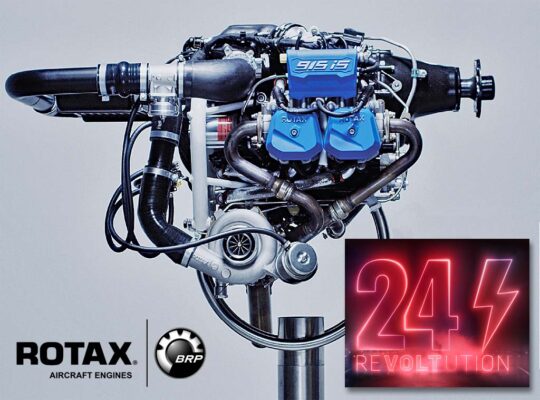 On December 22nd, 2021,
On December 22nd, 2021, 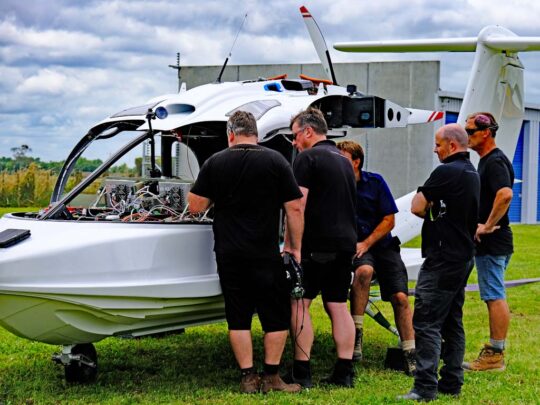 This was even more meaningful as Vickers installed RS Flight Systems’ single-lever control equipment (approval of which is expected in the coming FAA Mosaic regulation) regulating an MT prop.
This was even more meaningful as Vickers installed RS Flight Systems’ single-lever control equipment (approval of which is expected in the coming FAA Mosaic regulation) regulating an MT prop. 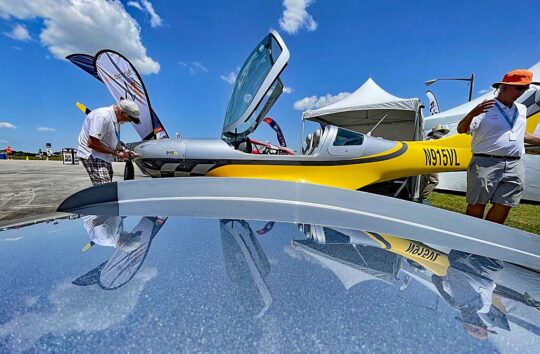 Try as they might to contain increases with various techniques, JMB representatives at
Try as they might to contain increases with various techniques, JMB representatives at 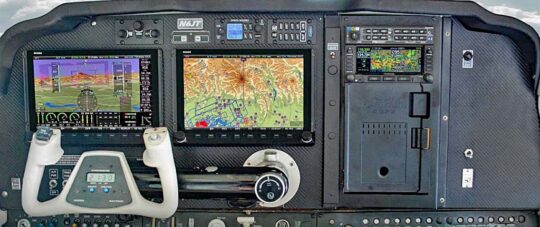 Why care? It's simple. If Dynon finds more market for their products, they'll be stronger to support your Dynon and to keep coming up with great new avionics ideas for all of us.
Almost single-handedly Dynon brought affordable, sophisticated, computer-based instruments to the cockpit. It wasn't that long ago that equipping a Part 23 bird with modern flat-screen equipment was a $100,000+ expense. Dynon brought such prices back to Earth.
Why care? It's simple. If Dynon finds more market for their products, they'll be stronger to support your Dynon and to keep coming up with great new avionics ideas for all of us.
Almost single-handedly Dynon brought affordable, sophisticated, computer-based instruments to the cockpit. It wasn't that long ago that equipping a Part 23 bird with modern flat-screen equipment was a $100,000+ expense. Dynon brought such prices back to Earth.
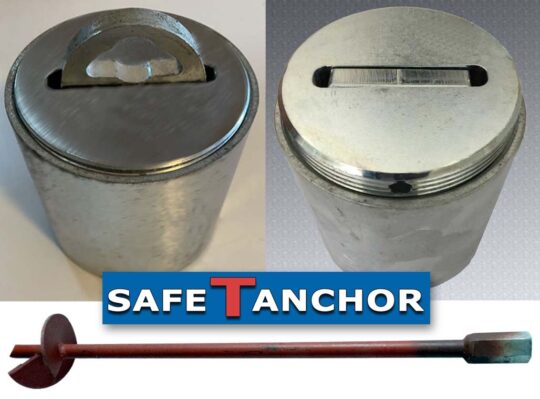 "We have invented and patented a safetanchor for planes and other uses. Easy to install yourselves and patented in the USA," wrote the company.
Design of the anchor’s top allows it to pivot from hook-up to becoming completely flat. This makes the entire surface of anchors flush to ground level without removing them and so you can drive vehicles over it, cut the grass, prevents tripping of personnel, and being a hazard to cleaning machines or snow removal equipment.
"We have invented and patented a safetanchor for planes and other uses. Easy to install yourselves and patented in the USA," wrote the company.
Design of the anchor’s top allows it to pivot from hook-up to becoming completely flat. This makes the entire surface of anchors flush to ground level without removing them and so you can drive vehicles over it, cut the grass, prevents tripping of personnel, and being a hazard to cleaning machines or snow removal equipment.
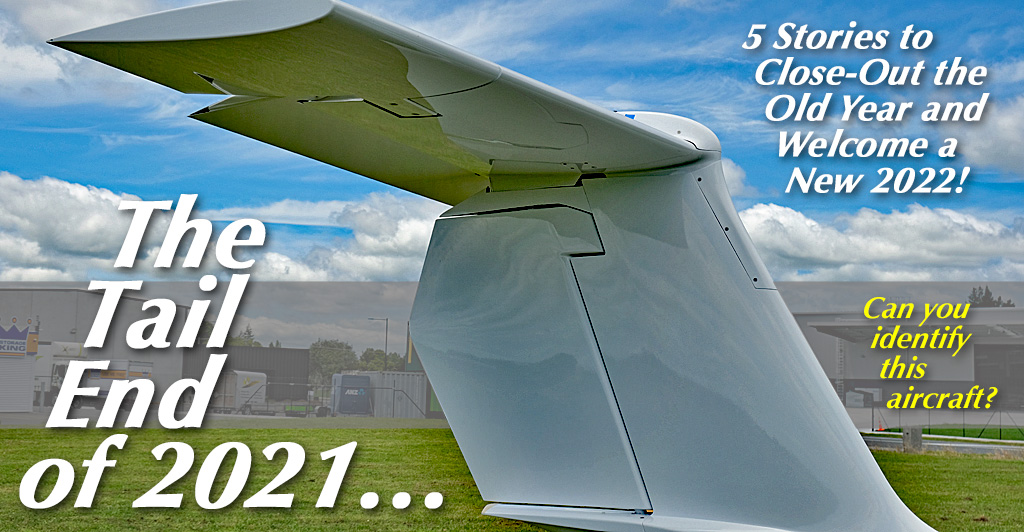
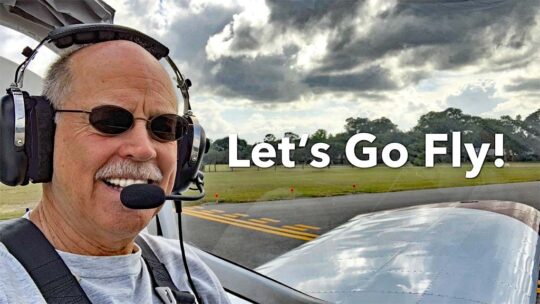 However, I have gotten to fly a small number of airplanes for a higher number of hours. The most recent such experience is with a
However, I have gotten to fly a small number of airplanes for a higher number of hours. The most recent such experience is with a 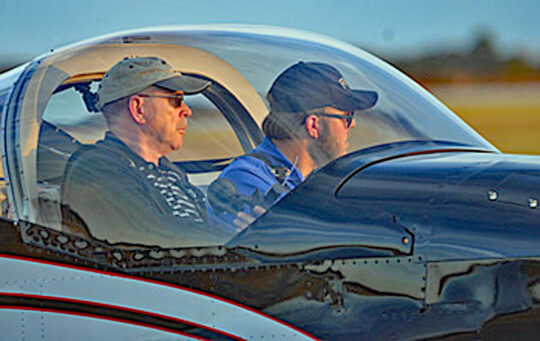 I will let the two videos below provide most of the nuts and bolts details that pilots crave. In the following words, I'll relate some of my experiences and discoveries after flying the -12 for more hours.
To begin, I'm a high wing guy. Most pilots have a clear preference for high or low wing configurations. Some think low wings look "less awkward" and "more streamlined."
They are entitled to that opinion, but for me, the number one reason to fly an aircraft with an engine is visibility… to observe a beautiful landscape unfold below. I've found aerial sightseeing is a common desire among aviators. If so, a low wing gets in the way. RV-12 places the wing sufficiently aft that from either seat you actually do have some downward visibility, but it is not as broad as a high wing design, especially one with cantilevered construction; no wing strut gets in your way.
I will let the two videos below provide most of the nuts and bolts details that pilots crave. In the following words, I'll relate some of my experiences and discoveries after flying the -12 for more hours.
To begin, I'm a high wing guy. Most pilots have a clear preference for high or low wing configurations. Some think low wings look "less awkward" and "more streamlined."
They are entitled to that opinion, but for me, the number one reason to fly an aircraft with an engine is visibility… to observe a beautiful landscape unfold below. I've found aerial sightseeing is a common desire among aviators. If so, a low wing gets in the way. RV-12 places the wing sufficiently aft that from either seat you actually do have some downward visibility, but it is not as broad as a high wing design, especially one with cantilevered construction; no wing strut gets in your way.
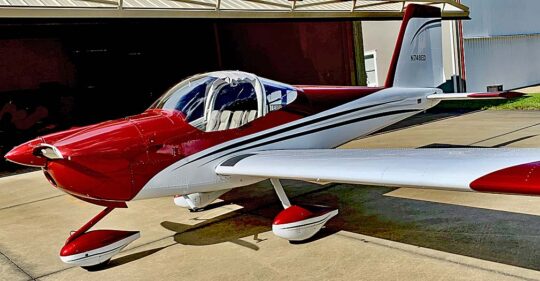 High wing airplanes are usually much easier to enter, a factor for older, less flexible pilots. Yet among low wing designs, RV-12 is easier as you enter from the front of the wing (see step in a nearby photo). You can use structure to help climb up on the wing and once you get to that point you can simply step onto the floor. You don't have to step in the seat as on some low wing aircraft. Most folks don't like having to do that and some low wing owners have a towel to put on the seat to keep dirty shoes off of it.
High wing airplanes are usually much easier to enter, a factor for older, less flexible pilots. Yet among low wing designs, RV-12 is easier as you enter from the front of the wing (see step in a nearby photo). You can use structure to help climb up on the wing and once you get to that point you can simply step onto the floor. You don't have to step in the seat as on some low wing aircraft. Most folks don't like having to do that and some low wing owners have a towel to put on the seat to keep dirty shoes off of it.
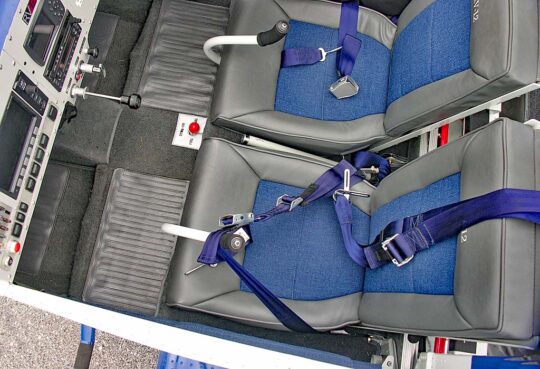
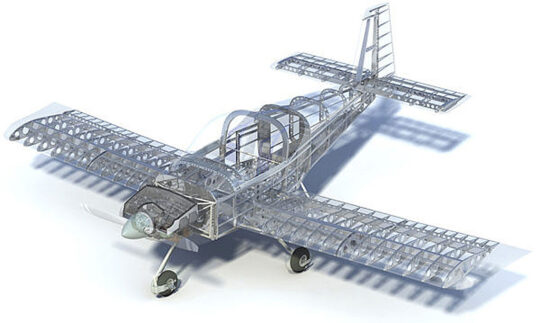
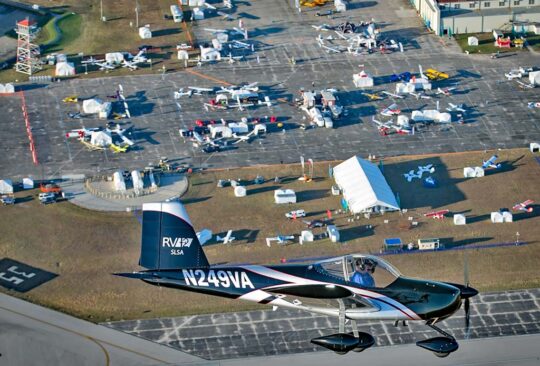
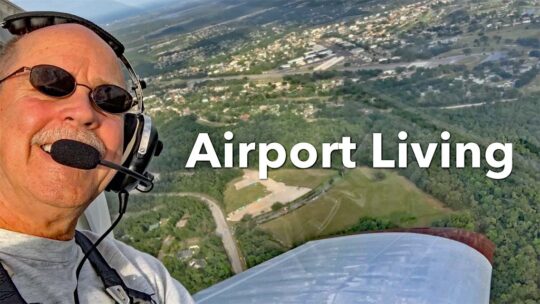 That's enough about me and what I think of RV-12. Check out these two videos and learn more about Van's terrific RV-12. Happy flying!
Tail winds, everyone!
The nearby photo shows me on downwind for runway 6 at
That's enough about me and what I think of RV-12. Check out these two videos and learn more about Van's terrific RV-12. Happy flying!
Tail winds, everyone!
The nearby photo shows me on downwind for runway 6 at 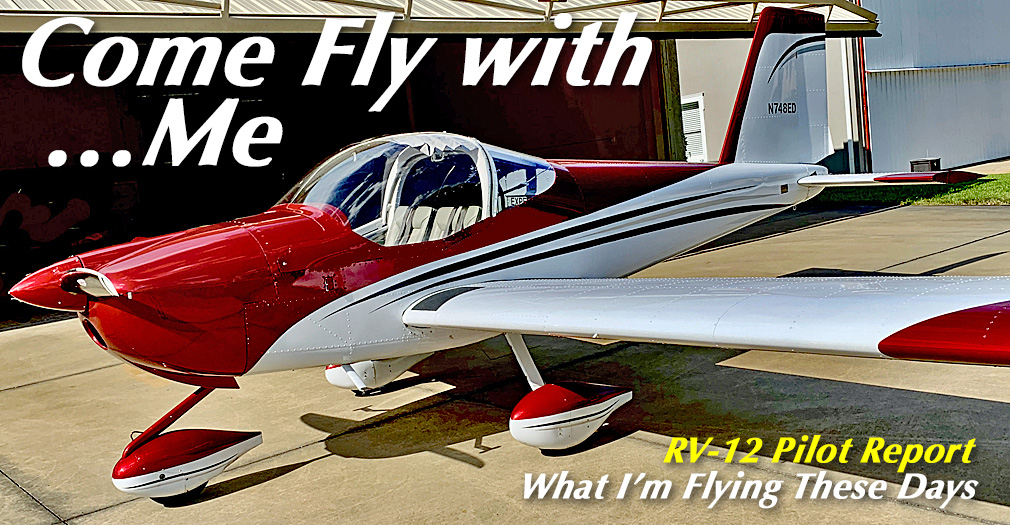
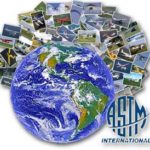 Contrary to common language, LSA are not "certified." Instead a manufacturer declares they meet ASTM standards and FAA "accepts" that declaration. Frequently at first, FAA audited producers in a point-by-point check of their declaration plus verifying that producers use generally-accepted best practices in their manufacturing. Companies with prior approvals may not be required to undergo an audit; it's always FAA's choice.
I've been involved with ASTM for many years and I can attest to these standards being very rigorous. They were welcomed by many countries where they are in active use. Indeed, FAA is using ASTM standards for LSA as a model for a future approval system for Part 23 general aviation aircraft. Nonetheless, a Standard Certificate is required for some countries; LSA have a Special Certificate. So, some companies believe it is in their best interest to obtain the higher level of approval.
Contrary to common language, LSA are not "certified." Instead a manufacturer declares they meet ASTM standards and FAA "accepts" that declaration. Frequently at first, FAA audited producers in a point-by-point check of their declaration plus verifying that producers use generally-accepted best practices in their manufacturing. Companies with prior approvals may not be required to undergo an audit; it's always FAA's choice.
I've been involved with ASTM for many years and I can attest to these standards being very rigorous. They were welcomed by many countries where they are in active use. Indeed, FAA is using ASTM standards for LSA as a model for a future approval system for Part 23 general aviation aircraft. Nonetheless, a Standard Certificate is required for some countries; LSA have a Special Certificate. So, some companies believe it is in their best interest to obtain the higher level of approval.
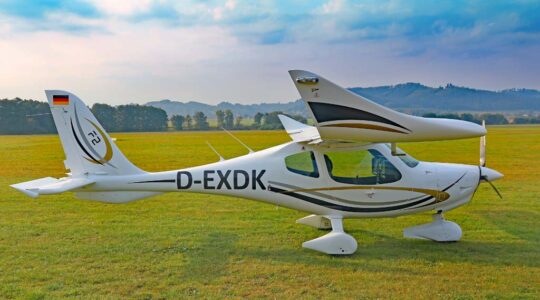 “We couldn’t be happier to see this important step for the F2 program, which ultimately will lead to the F4 four-seat version and the all-electric F2e,” said Matthias Betsch, Head of Flight Design's Design Organization department that created the F-Series and many of its advanced concepts.
"The F2-CS23 is the next step in Flight Design’s ‘Vision Zero’ concept which incorporates all commercially available safety features appropriate for this type of aircraft," the company elaborated. "These features include: a passive stall and spin resistant airframe design; airframe emergency parachute system; Amsafe-brand airbags and inertial reel harnesses; Garmin ESP (electronic stability and envelope protection); a strong occupant-protective enclosure for the pilot and passengers; automatic fuel management; simplified controls such as a combined throttle and brake lever; and a more modern, car-like atmosphere and operation."
“We couldn’t be happier to see this important step for the F2 program, which ultimately will lead to the F4 four-seat version and the all-electric F2e,” said Matthias Betsch, Head of Flight Design's Design Organization department that created the F-Series and many of its advanced concepts.
"The F2-CS23 is the next step in Flight Design’s ‘Vision Zero’ concept which incorporates all commercially available safety features appropriate for this type of aircraft," the company elaborated. "These features include: a passive stall and spin resistant airframe design; airframe emergency parachute system; Amsafe-brand airbags and inertial reel harnesses; Garmin ESP (electronic stability and envelope protection); a strong occupant-protective enclosure for the pilot and passengers; automatic fuel management; simplified controls such as a combined throttle and brake lever; and a more modern, car-like atmosphere and operation."
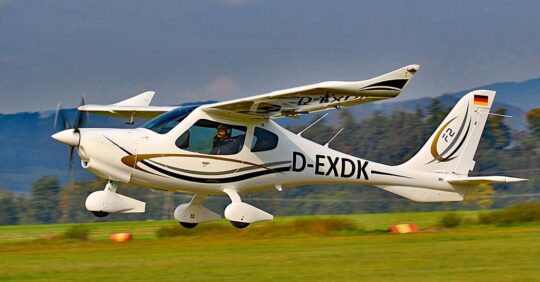
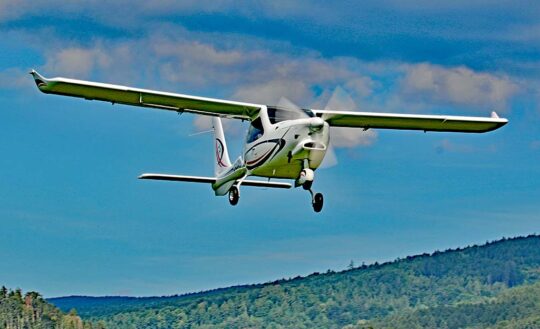 “EASA's CS-23 category is an internationally-recognized certification standard which will allow the new F2-CS23 to be easily accepted in all markets worldwide,” said Dieter Koehler, Project Manager the F2 and F4 projects.
Flight Design sees the F2-CS23 as "an excellent choice for flight schools with its wide and easy-to-enter cockpit, fuel efficiency, unique safety features, and state-of-the-art avionics suite. All new Flight Design aircraft come with carbon compensation up to TBO under Flight Design’s Pro-Climate plan." F2-CS23 follows the company's F2-LSA that began deliveries earlier in 2021.
“EASA's CS-23 category is an internationally-recognized certification standard which will allow the new F2-CS23 to be easily accepted in all markets worldwide,” said Dieter Koehler, Project Manager the F2 and F4 projects.
Flight Design sees the F2-CS23 as "an excellent choice for flight schools with its wide and easy-to-enter cockpit, fuel efficiency, unique safety features, and state-of-the-art avionics suite. All new Flight Design aircraft come with carbon compensation up to TBO under Flight Design’s Pro-Climate plan." F2-CS23 follows the company's F2-LSA that began deliveries earlier in 2021.
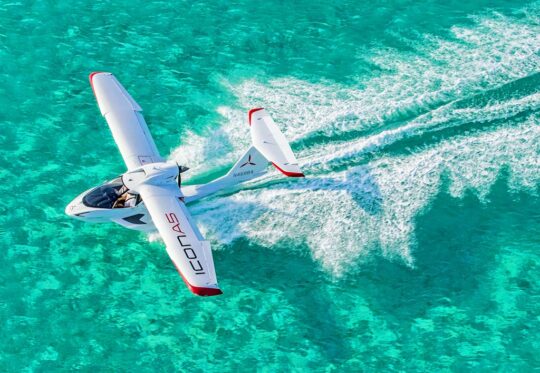 "In countries that do not have a Light-Sport category (Canada and others), the Type Certified version of the
"In countries that do not have a Light-Sport category (Canada and others), the Type Certified version of the 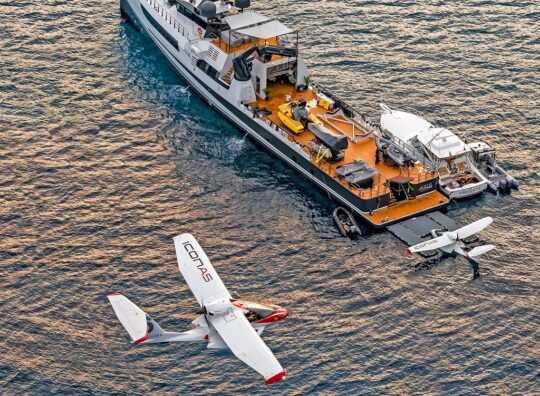 Primary Category certification also has benefits in the U.S., Icon reported. One is that any A&P is authorized to work on it. Because it is not a SLSA, owners will not need to use designated Icon Service Partners, though the company will still encourage them to do so.
Another benefit is international travel, for example, flying your Icon A5 to islands in the Caribbean, or to keep your A5 on a yacht when you are in another country (image). "Light-Sport Aircraft do not receive a Type Certificate," Icon explained, "so typically, special permission is required before you can fly in another country just like if you are flying an Experimental aircraft." Some exceptions exist, notably in the Bahamas, which does allow U.S.-registered LSAs. The Bahamas is further unique among other countries in that they accept FAA's Sport Pilot certificate.
Primary Category certification also has benefits in the U.S., Icon reported. One is that any A&P is authorized to work on it. Because it is not a SLSA, owners will not need to use designated Icon Service Partners, though the company will still encourage them to do so.
Another benefit is international travel, for example, flying your Icon A5 to islands in the Caribbean, or to keep your A5 on a yacht when you are in another country (image). "Light-Sport Aircraft do not receive a Type Certificate," Icon explained, "so typically, special permission is required before you can fly in another country just like if you are flying an Experimental aircraft." Some exceptions exist, notably in the Bahamas, which does allow U.S.-registered LSAs. The Bahamas is further unique among other countries in that they accept FAA's Sport Pilot certificate.
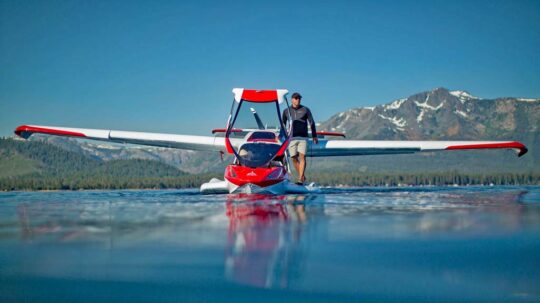 "International expansion has been a critical part of our business plan since day one,” said Jason Huang, President of Icon Aircraft. “People in the U.S. have been able to enjoy adventure flying in the Icon A5 for several years, and we will continue to produce the SLSA version. But now we are excited to introduce the A5 to others around the world. Type Certification is one of the many investments Icon has made to grow our capabilities and improve the A5. We know it will be appreciated by our international deposit holders and sales partners, and we are all very excited for this day to come."
"International expansion has been a critical part of our business plan since day one,” said Jason Huang, President of Icon Aircraft. “People in the U.S. have been able to enjoy adventure flying in the Icon A5 for several years, and we will continue to produce the SLSA version. But now we are excited to introduce the A5 to others around the world. Type Certification is one of the many investments Icon has made to grow our capabilities and improve the A5. We know it will be appreciated by our international deposit holders and sales partners, and we are all very excited for this day to come."
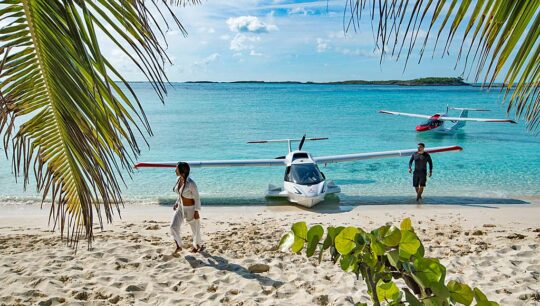 "Note that we will continue to make the SLSA version, as well," assured Huang. This continues the chance for American pilots to fly A5 without the need for an aviation medical, using only their driver's license in lieu of a medical approval.
Why not pursue approval using the coming regulation often referred to as Mosaic?
"Mosaic is an FAA initiative that doesn’t translate globally," stated the company. "Thus, pursuing Primary Category Certification is the action we needed to coincide with our global expansion plans."
"Note that we will continue to make the SLSA version, as well," assured Huang. This continues the chance for American pilots to fly A5 without the need for an aviation medical, using only their driver's license in lieu of a medical approval.
Why not pursue approval using the coming regulation often referred to as Mosaic?
"Mosaic is an FAA initiative that doesn’t translate globally," stated the company. "Thus, pursuing Primary Category Certification is the action we needed to coincide with our global expansion plans."
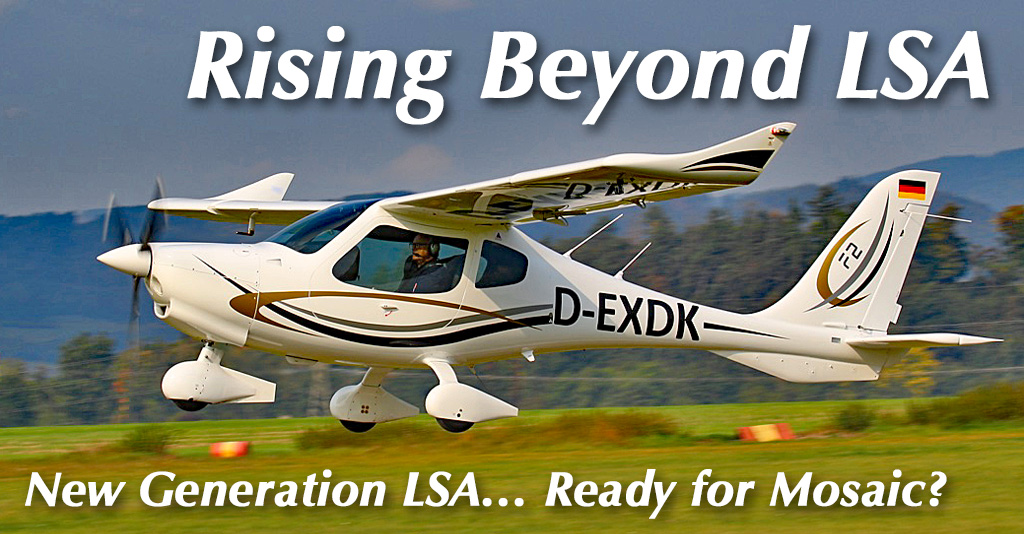
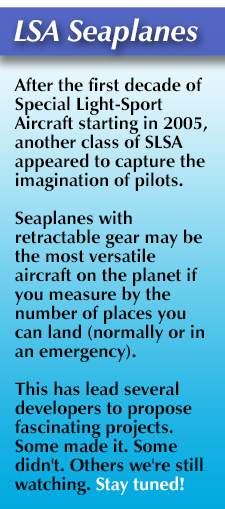
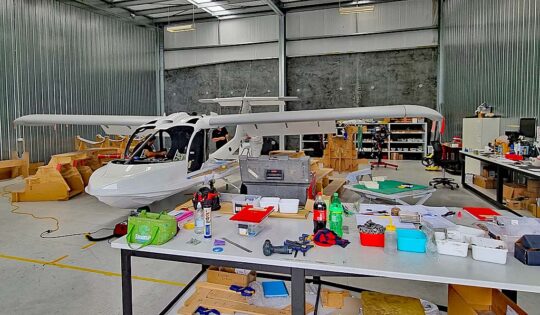
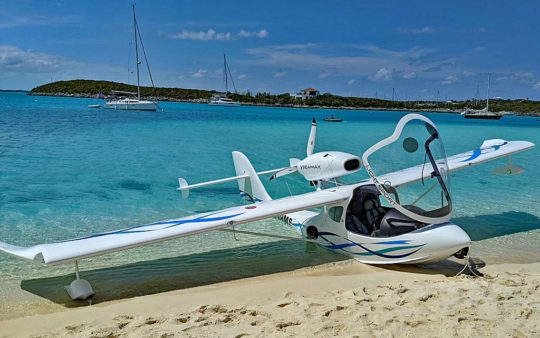
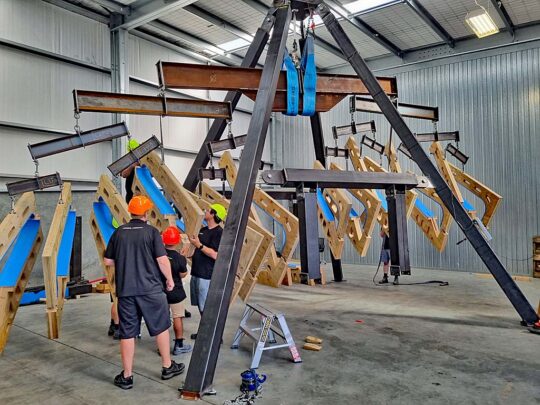
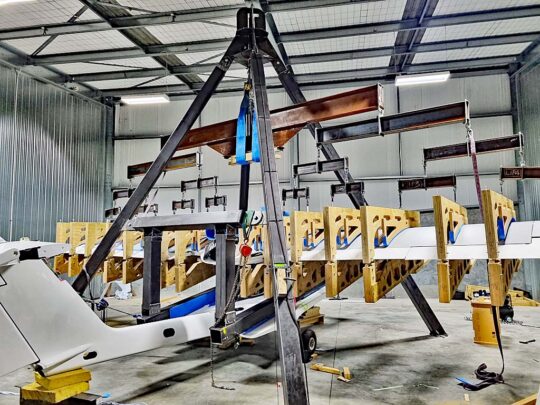 Great existing designs, a high-end model, other fascinating forays that upped the game, and a full market of choices — what does a new high-end entrant have to do? A lot! Breaking into this well-supplied sector of light aviation demands an impressive entry. Vickers appears well poised to bring something truly interesting and one built with the future in mind. It also got the
Great existing designs, a high-end model, other fascinating forays that upped the game, and a full market of choices — what does a new high-end entrant have to do? A lot! Breaking into this well-supplied sector of light aviation demands an impressive entry. Vickers appears well poised to bring something truly interesting and one built with the future in mind. It also got the 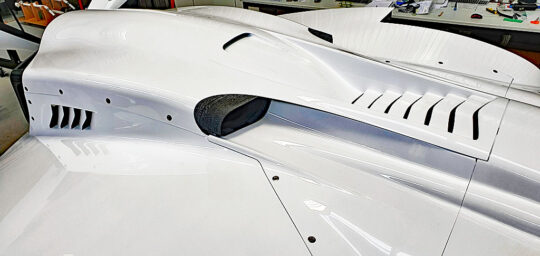
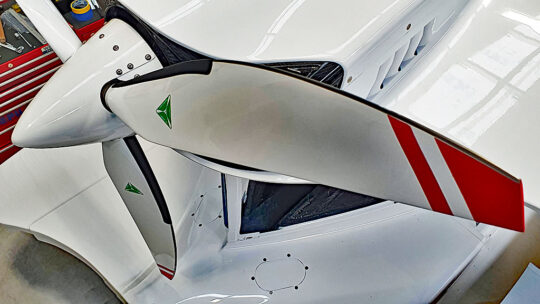
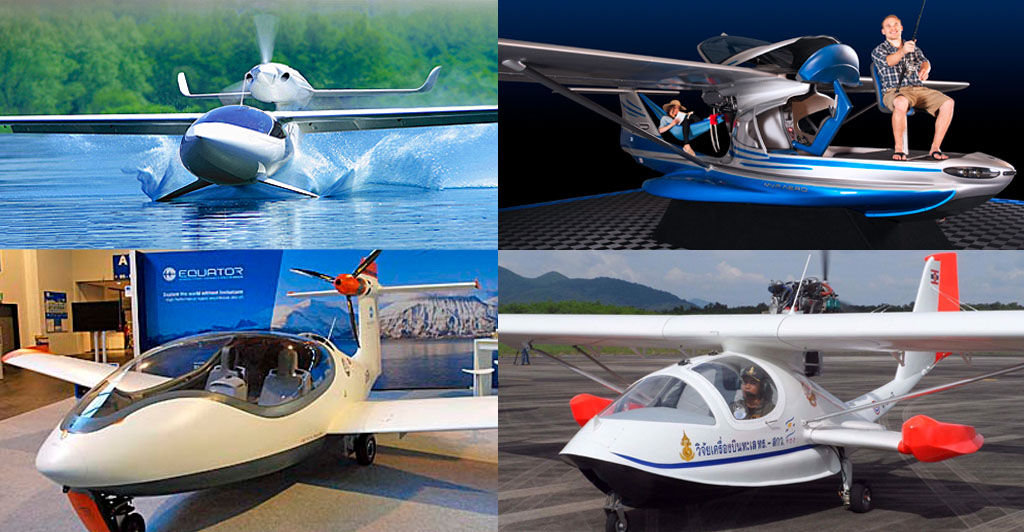
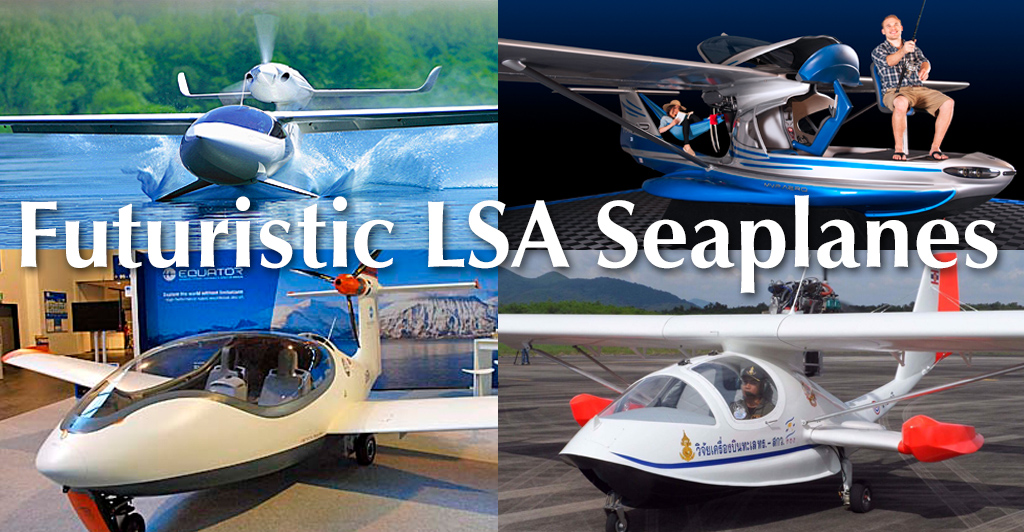
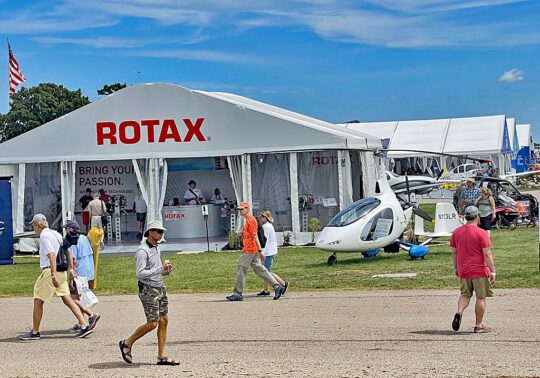 Back in 1998 many pilots were doubtful about Cirrus.
I was close to the company during these years. Over and over I heard statements such as: "They'll never complete the design." "They'll never get FAA to approve it (especially with that parachute on board)." "They'll never raise the money to produce it." "They'll never get production to a profitable level." "They'll never develop beyond a single model." Those doubters were wrong on all counts.
Only a few years earlier, in 1992, Americans got their first glimpse of the
Back in 1998 many pilots were doubtful about Cirrus.
I was close to the company during these years. Over and over I heard statements such as: "They'll never complete the design." "They'll never get FAA to approve it (especially with that parachute on board)." "They'll never raise the money to produce it." "They'll never get production to a profitable level." "They'll never develop beyond a single model." Those doubters were wrong on all counts.
Only a few years earlier, in 1992, Americans got their first glimpse of the 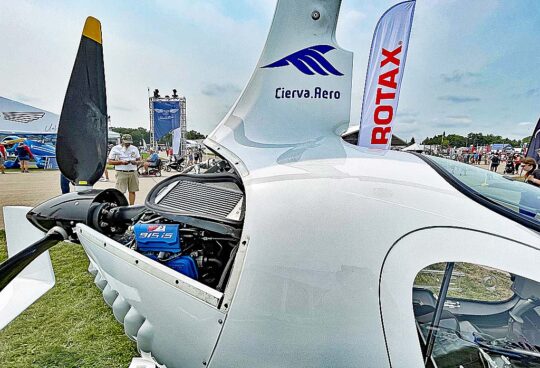 Rotax powers all kinds of recreational vehicles and recently announced, "
Rotax powers all kinds of recreational vehicles and recently announced, "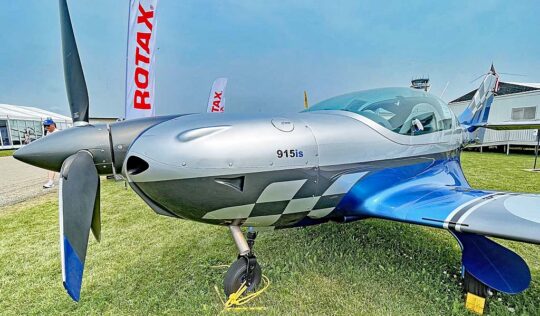
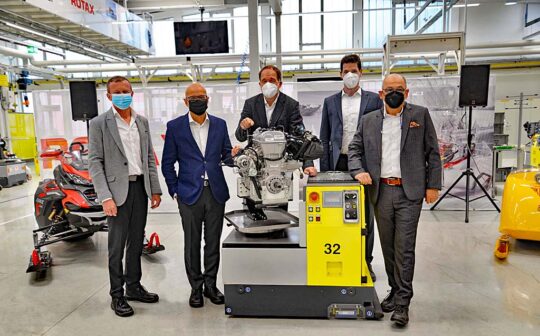 BRP President and CEO José Boisjoli invited guests of honor from the parent company plus Rotax employees to celebrate this success.
BRP President and CEO José Boisjoli invited guests of honor from the parent company plus Rotax employees to celebrate this success.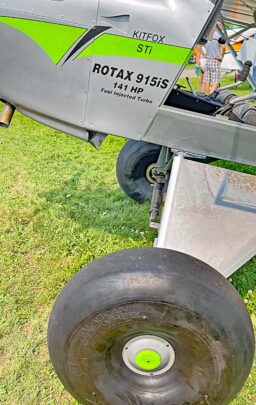 Gunskirchen assembly employees joined guests from BRP-Rotax's Canadian parent company as Boisjoli thanked the team in his speech, congratulating them on their dedication. Major company officials attending the celebration in Upper Austria on behalf of BRP were Thomas Uhr, Senior Vice-President Product Engineering and Manufacturing Operations Powersports, Anne Le Breton, Senior Vice-President Human Resources, Eric Lebel, Vice-President Human Resources and Minh Thanh Tran, Vice-President Corporate Strategy & Development and Global Transformation.
Gunskirchen assembly employees joined guests from BRP-Rotax's Canadian parent company as Boisjoli thanked the team in his speech, congratulating them on their dedication. Major company officials attending the celebration in Upper Austria on behalf of BRP were Thomas Uhr, Senior Vice-President Product Engineering and Manufacturing Operations Powersports, Anne Le Breton, Senior Vice-President Human Resources, Eric Lebel, Vice-President Human Resources and Minh Thanh Tran, Vice-President Corporate Strategy & Development and Global Transformation.
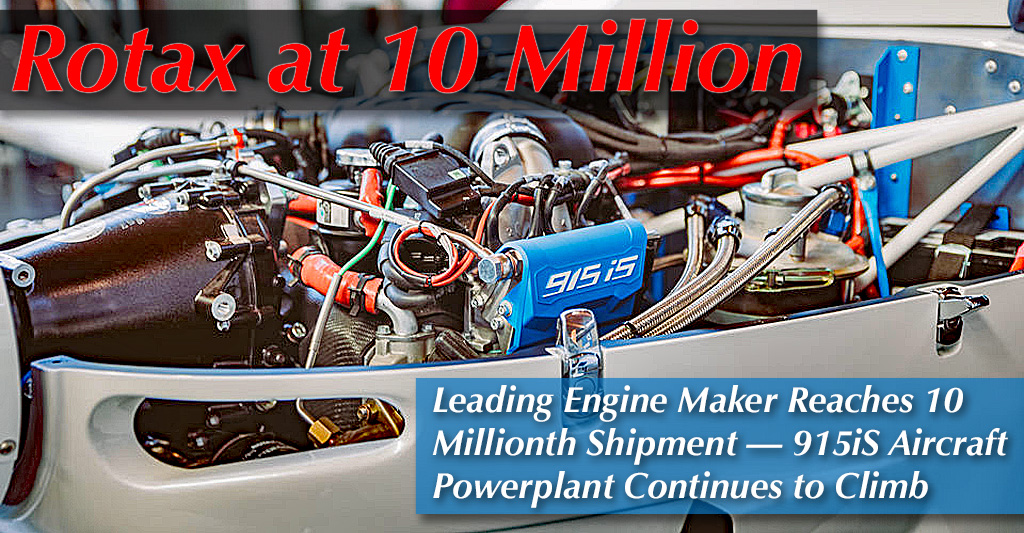
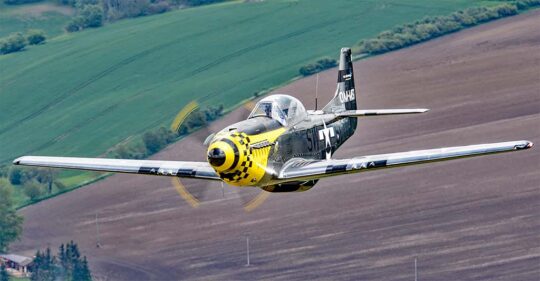 You may love your LSA or Sport Pilot kit or an ultralight aircraft, but nearly all pilots occasionally dream of owning — or at least flying — a P-51 Mustang.
Let's face it. You probably can't afford to buy one and it's almost certain you don't have the budget to maintain it and fly it. The fuel bill alone for an hour's flying will make you gasp.
So, what do you do if you have a Walter Mitty-esque urge to own and fly a P-51 but you don't have a couple million laying around unused?
Why not build your own?
You may love your LSA or Sport Pilot kit or an ultralight aircraft, but nearly all pilots occasionally dream of owning — or at least flying — a P-51 Mustang.
Let's face it. You probably can't afford to buy one and it's almost certain you don't have the budget to maintain it and fly it. The fuel bill alone for an hour's flying will make you gasp.
So, what do you do if you have a Walter Mitty-esque urge to own and fly a P-51 but you don't have a couple million laying around unused?
Why not build your own?
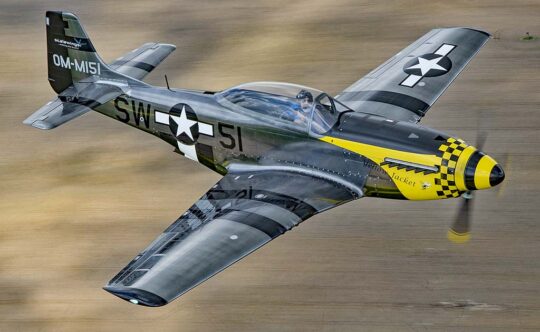 As you see from the timeline above, it has taken a while for the twists and turns of development to unravel themselves. Now ScaleWings appears to be firing on all cylinders. Recently, ScaleWings announced they starting shipping Quick Build kits (see nearby image).
Does it take so long to get such an aircraft ready? Well, yes, for at least two reasons.
First, a more complex design takes longer to go through concept, creation, alteration, testing, and gaining approval from authorities. After all that, the company can start building but this is also when the investment needs to be highest.
As you see from the timeline above, it has taken a while for the twists and turns of development to unravel themselves. Now ScaleWings appears to be firing on all cylinders. Recently, ScaleWings announced they starting shipping Quick Build kits (see nearby image).
Does it take so long to get such an aircraft ready? Well, yes, for at least two reasons.
First, a more complex design takes longer to go through concept, creation, alteration, testing, and gaining approval from authorities. After all that, the company can start building but this is also when the investment needs to be highest.
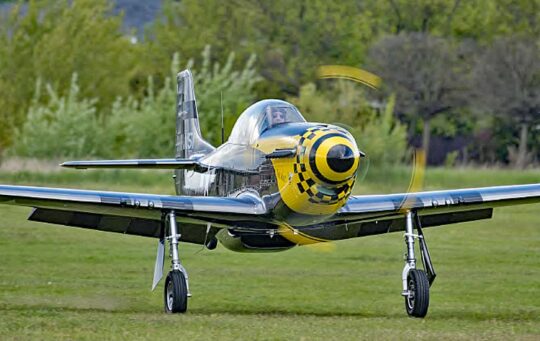 SW-51 began life as the FK-51. Alert readers will recognize that "FK" refers to FK Lightplanes, a German design company lead by Peter Funk. For years, Peter manufactured popular designs such as FK-9 that sold hundreds of units. Peter developed other designs including the biplane aerobatic Comet, the sleek Polaris LeMans, and several wonderful vintage recreations. His interest was in the creation and development of designs, though; Peter was less enamored of the manufacturing side of the business, so he turned to others.
A man named Rolland Hallam launched into building a series of the FK designs. It seemed to go well for a while and at Aero Friedrichshafen a decade ago, he created a sensation by introducing the amazing creation of the highly-energetic Hans Schoeller.
SW-51 began life as the FK-51. Alert readers will recognize that "FK" refers to FK Lightplanes, a German design company lead by Peter Funk. For years, Peter manufactured popular designs such as FK-9 that sold hundreds of units. Peter developed other designs including the biplane aerobatic Comet, the sleek Polaris LeMans, and several wonderful vintage recreations. His interest was in the creation and development of designs, though; Peter was less enamored of the manufacturing side of the business, so he turned to others.
A man named Rolland Hallam launched into building a series of the FK designs. It seemed to go well for a while and at Aero Friedrichshafen a decade ago, he created a sensation by introducing the amazing creation of the highly-energetic Hans Schoeller.
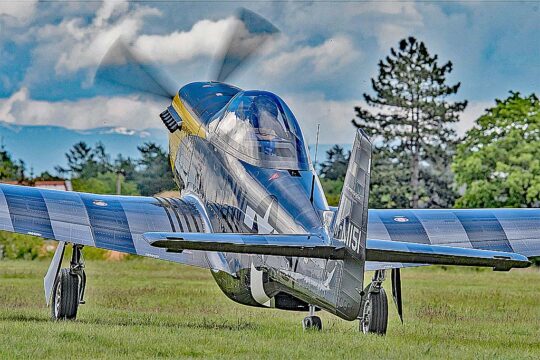 FK, working with ScaleWings as a consultant, hoped to build one a week starting as early as 2015. It never happened. Whatever the challenges Rolland faced, they proved insurmountable. Production of all FK airplanes slowed to a crawl. FK-51 went dark.
After Rolland bowed out, Hans joined up with younger entrepreneur Christian von Kessel, who found money and facilities and vowed to bring the now renamed SW-51 to market. That took time, but Christian kept after his goal.
SW-51 conducted a successful maiden flight and passed other technical benchmarks. Then Christian and Hans set about putting SW-51 into production. This is not a small project but they are now excited to announce they are shipping kits.
FK, working with ScaleWings as a consultant, hoped to build one a week starting as early as 2015. It never happened. Whatever the challenges Rolland faced, they proved insurmountable. Production of all FK airplanes slowed to a crawl. FK-51 went dark.
After Rolland bowed out, Hans joined up with younger entrepreneur Christian von Kessel, who found money and facilities and vowed to bring the now renamed SW-51 to market. That took time, but Christian kept after his goal.
SW-51 conducted a successful maiden flight and passed other technical benchmarks. Then Christian and Hans set about putting SW-51 into production. This is not a small project but they are now excited to announce they are shipping kits.
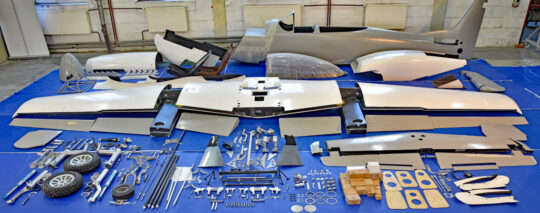 Christian and Sebastian recently sent news about ScaleWings Aircraft launching shipments of a “Quick-Build Kit” of the SW-51 Mustang.
Calling it "the world's most accurate P-51 Mustang replica at 70% scale," a standard SW-51 kit — with MTOW of 750 kilograms or 1,654 pounds — includes "the complete all-carbon body parts, control elements, seats, and the electrically driven retractable landing gear."
Christian and Sebastian recently sent news about ScaleWings Aircraft launching shipments of a “Quick-Build Kit” of the SW-51 Mustang.
Calling it "the world's most accurate P-51 Mustang replica at 70% scale," a standard SW-51 kit — with MTOW of 750 kilograms or 1,654 pounds — includes "the complete all-carbon body parts, control elements, seats, and the electrically driven retractable landing gear."
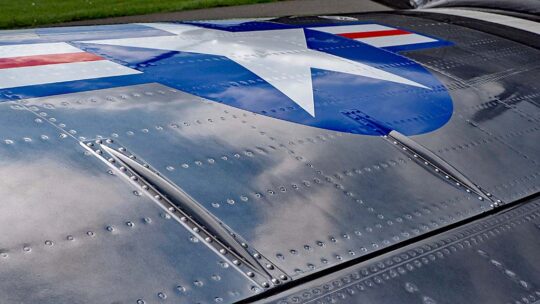 The company describes SW-51's unique feature: "more than 100,000 details (rivets, screws, etc.) of the original P-51 Mustang are faithfully worked into the carbon surfaces of the delivered kit, creating a near-perfect reincarnation of the legendary icon."
"This is beyond any previous kit execution in the market," said Christian and Sebastian. I'm inclined to agree for the singular fact of SW-51's incredibly authentic mimicking of the World War II original.
According to ScaleWings, the standard SW-51 kit includes:
The company describes SW-51's unique feature: "more than 100,000 details (rivets, screws, etc.) of the original P-51 Mustang are faithfully worked into the carbon surfaces of the delivered kit, creating a near-perfect reincarnation of the legendary icon."
"This is beyond any previous kit execution in the market," said Christian and Sebastian. I'm inclined to agree for the singular fact of SW-51's incredibly authentic mimicking of the World War II original.
According to ScaleWings, the standard SW-51 kit includes:
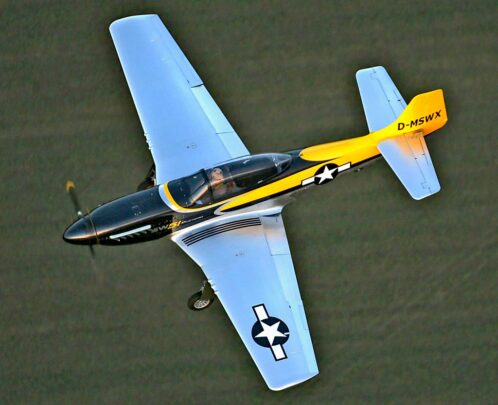 So… can you afford this beauty? Nautrally, that depends on your individual budget. Kit prices reflect the work involved in fabricating parts.
In their "Launch Edition," Standard Kits start at €119,000 (about $138,000). The Standard Kit and optional packages can be ordered now at the
So… can you afford this beauty? Nautrally, that depends on your individual budget. Kit prices reflect the work involved in fabricating parts.
In their "Launch Edition," Standard Kits start at €119,000 (about $138,000). The Standard Kit and optional packages can be ordered now at the 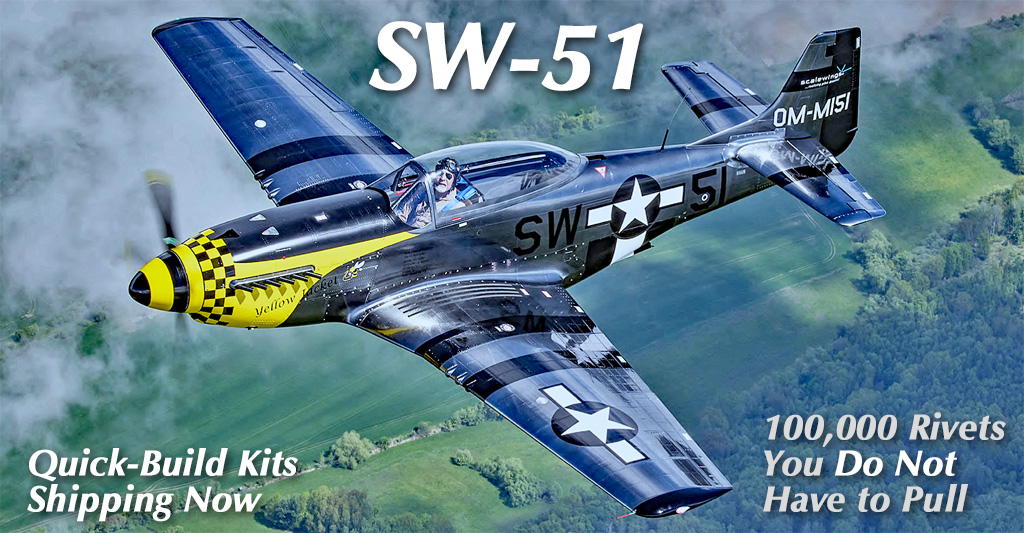
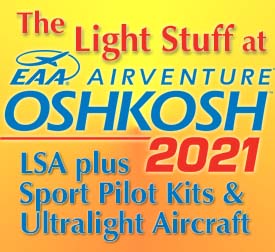 AirVenture Oshkosh 2021 opens Monday July 26th and I am on-site to capture all the best news I can find for light aircraft.
Regretfully, my Canada-based
AirVenture Oshkosh 2021 opens Monday July 26th and I am on-site to capture all the best news I can find for light aircraft.
Regretfully, my Canada-based 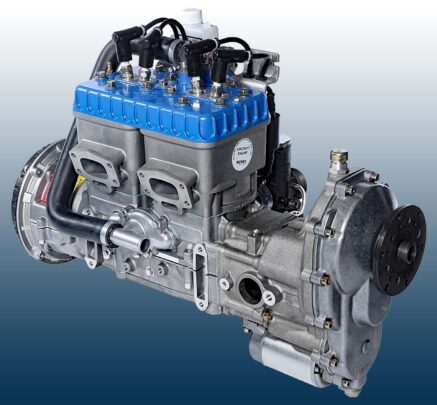 Indeed, as light aviation enthusiasts prepare for the coming Mosaic regulation that will dramatically alter the landscape, a clearer dividing line is revealing itself. Many light aircraft have embraced Rotax's four stroke engines, overwhelmingly their 9-series models including carbureted 912 ULS, fuel-injected 912iS, turbocharged 914, and the newest 915iS.
Indeed, as light aviation enthusiasts prepare for the coming Mosaic regulation that will dramatically alter the landscape, a clearer dividing line is revealing itself. Many light aircraft have embraced Rotax's four stroke engines, overwhelmingly their 9-series models including carbureted 912 ULS, fuel-injected 912iS, turbocharged 914, and the newest 915iS.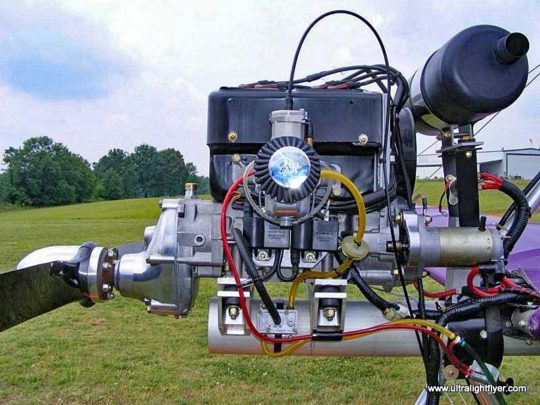
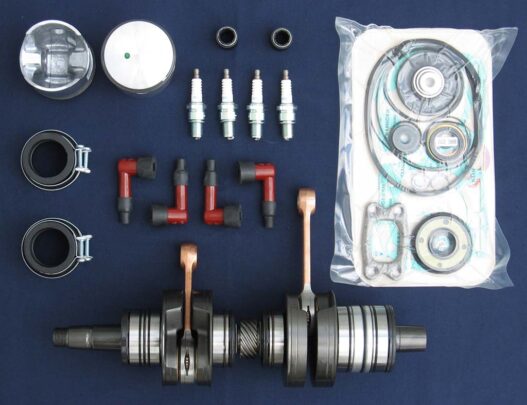
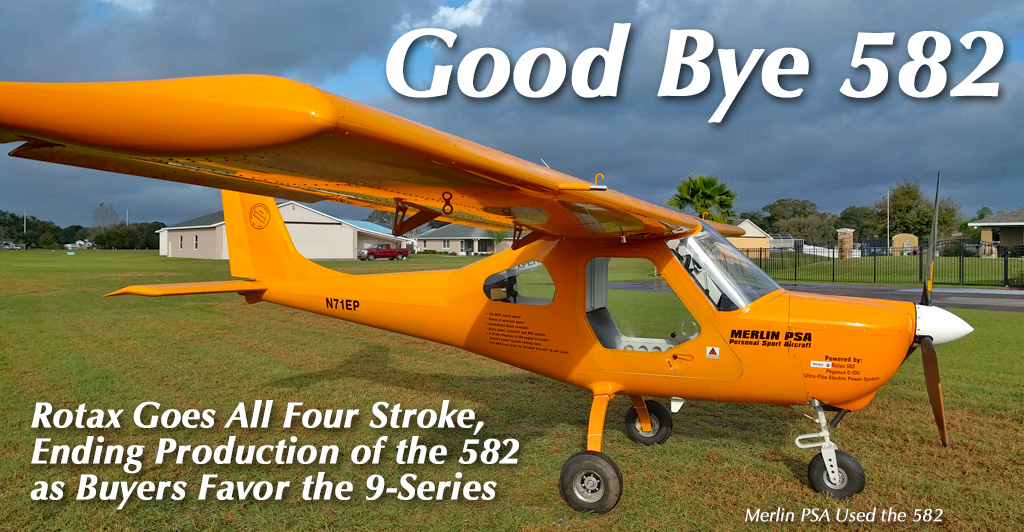
 Most of us, however, are not Alberto. Apparently, this man does not care to sit idly and admire his past achievements.
When you've already designed what may be the fastest LSA-type aircraft in the world, what do you do next?
Shorten Risen's wing span, install a more powerful engine and go even faster. Duh!
Original Risen wingspan: 29.5 feet — Risen SuperVeloce wingspan: 26.9 feet. How much difference results when span loses 31 inches and power increases 40%? Speed demons want to know.
Most of us, however, are not Alberto. Apparently, this man does not care to sit idly and admire his past achievements.
When you've already designed what may be the fastest LSA-type aircraft in the world, what do you do next?
Shorten Risen's wing span, install a more powerful engine and go even faster. Duh!
Original Risen wingspan: 29.5 feet — Risen SuperVeloce wingspan: 26.9 feet. How much difference results when span loses 31 inches and power increases 40%? Speed demons want to know.
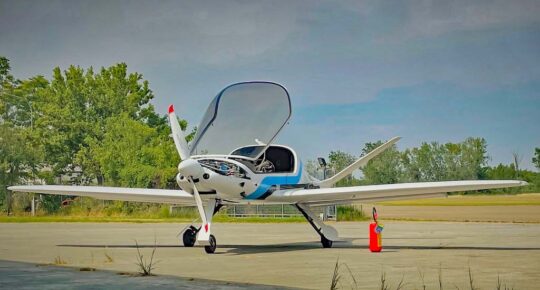 It's worth noting several countries that accept ASTM standards do not limit speed. That's why ASTM created standards for retracts, adjustable props, and other developments that are not presently permitted in America. (The organization is now called ASTM International for that precise reason.)
Are U.S.-based LSA genuinely limited to 120 knots? Yes, and no.
While this may change in the regulation to come at the end of 2023, present-day American LSA are limited to a maximum of 120 knots in level flight at sea level. Most pilots are aware that indicated speeds translate to higher numbers at, say, 10,000 feet above sea level. Some LSA are advertised as capable of reaching 150 knots at high altitude …and that is perfectly okay.
It's worth noting several countries that accept ASTM standards do not limit speed. That's why ASTM created standards for retracts, adjustable props, and other developments that are not presently permitted in America. (The organization is now called ASTM International for that precise reason.)
Are U.S.-based LSA genuinely limited to 120 knots? Yes, and no.
While this may change in the regulation to come at the end of 2023, present-day American LSA are limited to a maximum of 120 knots in level flight at sea level. Most pilots are aware that indicated speeds translate to higher numbers at, say, 10,000 feet above sea level. Some LSA are advertised as capable of reaching 150 knots at high altitude …and that is perfectly okay.
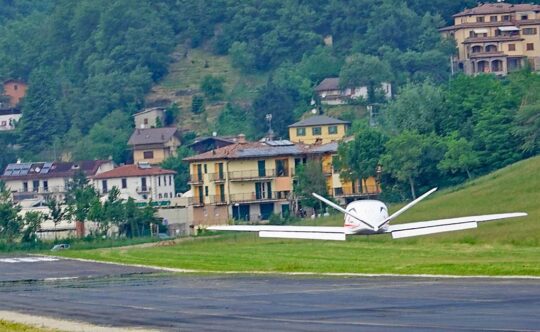
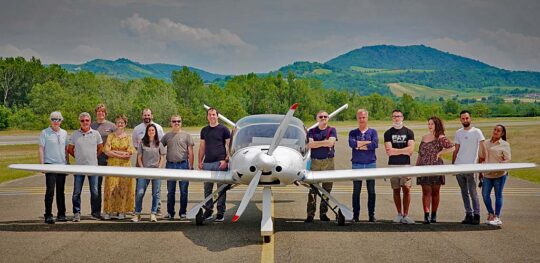 "Risen powered with the Rotax 914 turbo for the first time passed the barrier of 400 kph (249 mph) on a 15 kilometer straight course and 379 kph (235 mph) on a 50-kilometer triangle. Truly spectacular especially with a 115 horsepower engine. Just imagine what would happen with a 915iS?" asked Commercial Director, Stéphan D’haene in the fall of 2020.
"As Porto Aviation, we don’t believe you can just install a 40% more powerful engine in the same airframe," continued Stéphan. "Either your 100 horsepower version is underpowered, or [an airframe with a] 141 horsepower 915iS will be overpowered. This is just physics. Exceptions are, of course, STOL or other draggy designs that will see only a relative small increase of cruise speed due to drag. Risen has the lowest drag ratio in the industry, so adding 40% more power is a lot for an already-fast aircraft."
"Risen powered with the Rotax 914 turbo for the first time passed the barrier of 400 kph (249 mph) on a 15 kilometer straight course and 379 kph (235 mph) on a 50-kilometer triangle. Truly spectacular especially with a 115 horsepower engine. Just imagine what would happen with a 915iS?" asked Commercial Director, Stéphan D’haene in the fall of 2020.
"As Porto Aviation, we don’t believe you can just install a 40% more powerful engine in the same airframe," continued Stéphan. "Either your 100 horsepower version is underpowered, or [an airframe with a] 141 horsepower 915iS will be overpowered. This is just physics. Exceptions are, of course, STOL or other draggy designs that will see only a relative small increase of cruise speed due to drag. Risen has the lowest drag ratio in the industry, so adding 40% more power is a lot for an already-fast aircraft."
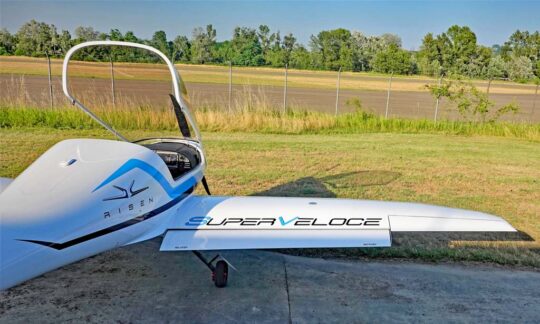
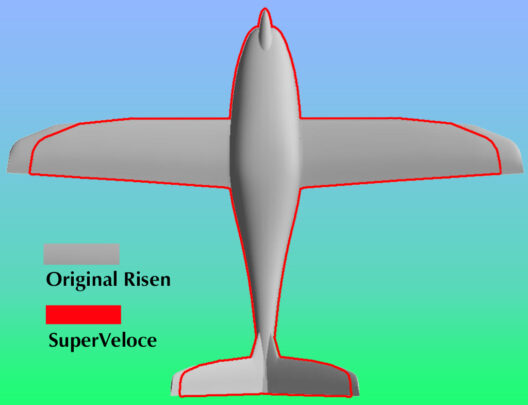 "We performed stalls and saw a 10 kilometer per hour or 6 knot increase compared to the normal Risen," observed Stéphan. "This is great news as it confirms the computer simulations and allows us to stay within European Microlight regulations, too."
Going fast pays benefits, at least for buyers that have somewhat thicker wallets.
"Let’s not forget Risen has one of the largest cabins on the market with ultimate comfort for those long trips," added the commercial director. "Our first 12 months of production are already sold out, even though few outside the factory have seen the aircraft."
Serial production reportedly commenced three months ago. SuperVeloce #2 will soon take its maiden flight.
Stéphan expressed, "Many U.S. pilots want this aircraft. There are going to be a lot of busy builders!"
Care to be among them?
"We performed stalls and saw a 10 kilometer per hour or 6 knot increase compared to the normal Risen," observed Stéphan. "This is great news as it confirms the computer simulations and allows us to stay within European Microlight regulations, too."
Going fast pays benefits, at least for buyers that have somewhat thicker wallets.
"Let’s not forget Risen has one of the largest cabins on the market with ultimate comfort for those long trips," added the commercial director. "Our first 12 months of production are already sold out, even though few outside the factory have seen the aircraft."
Serial production reportedly commenced three months ago. SuperVeloce #2 will soon take its maiden flight.
Stéphan expressed, "Many U.S. pilots want this aircraft. There are going to be a lot of busy builders!"
Care to be among them?
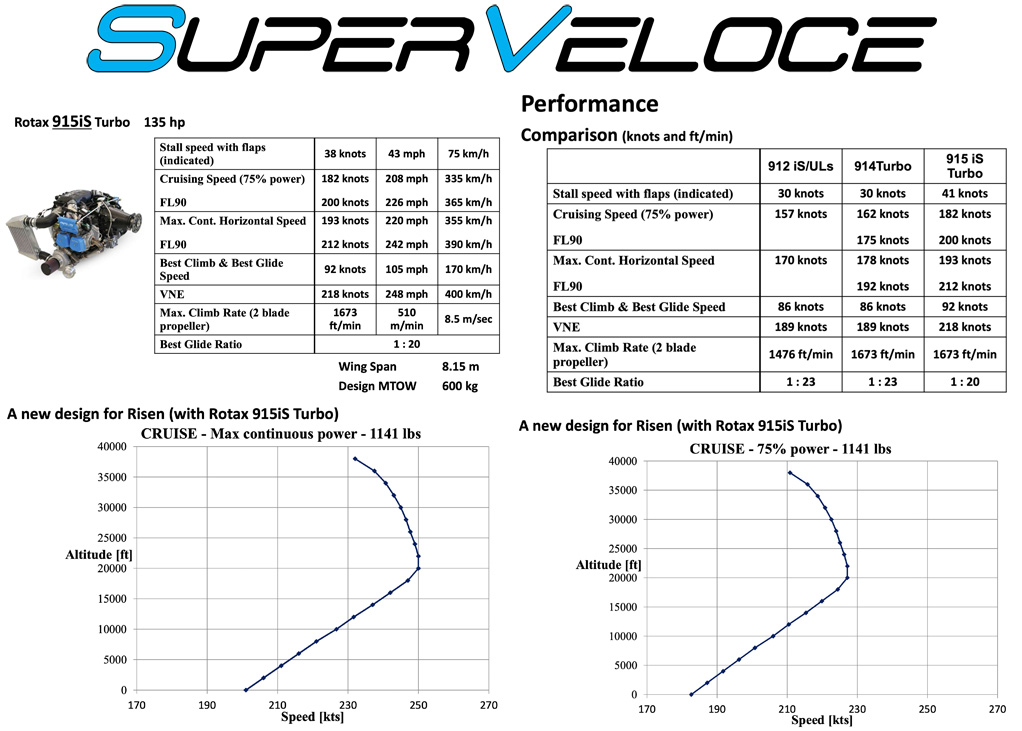
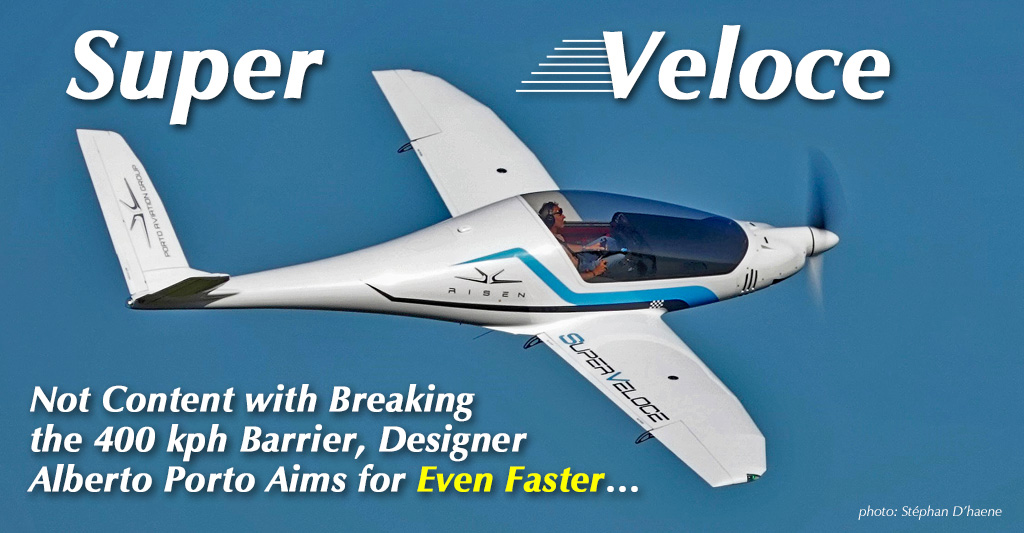
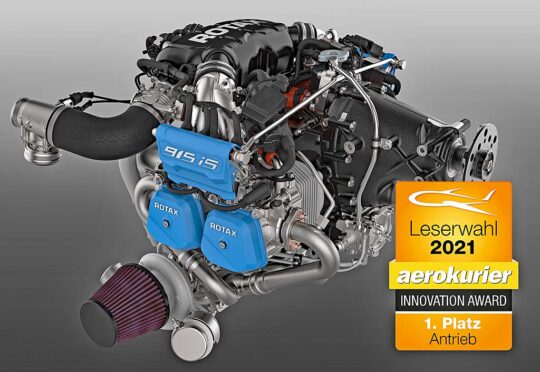 A little over a year ago, the engine builder from Gunskirchen, Austria celebrated their 100th anniversary.
A little over a year ago, the engine builder from Gunskirchen, Austria celebrated their 100th anniversary. 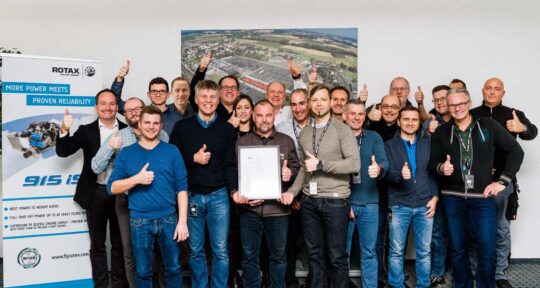
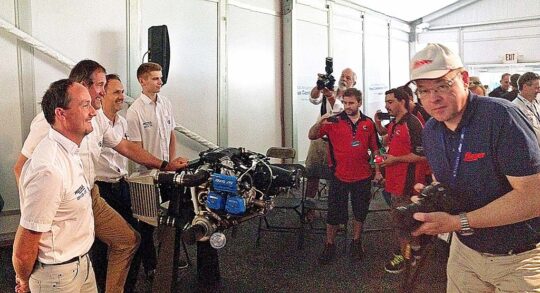

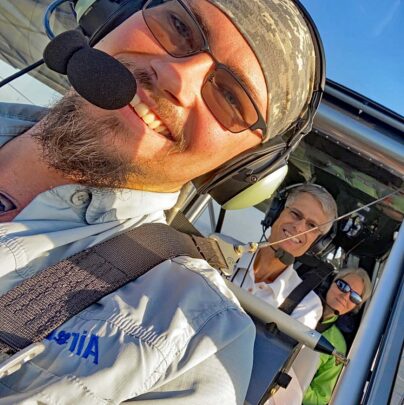
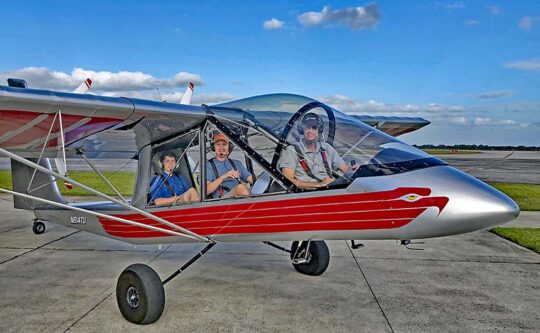
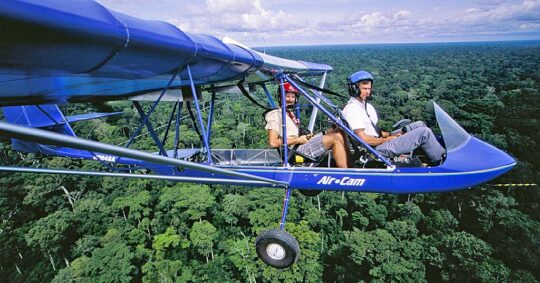
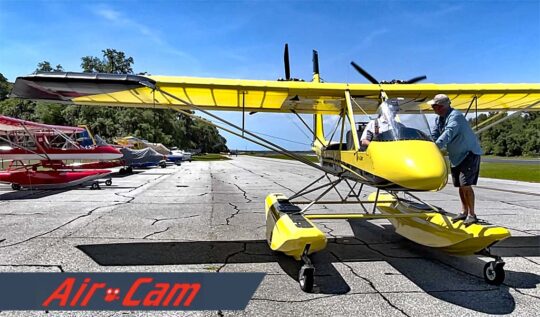
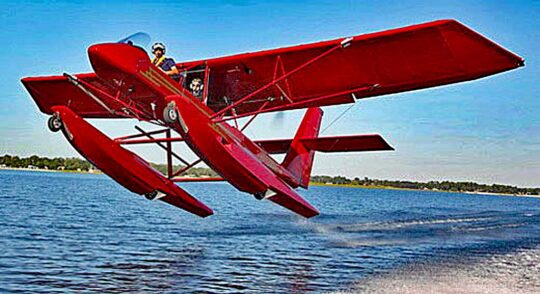 Once we descended below 300 feet, that gusty air made final approach feel like a roller coaster ride. Woo-hoo!
I decided to keep my speed up and leave the flaps retracted to facilitate an abort if it proved too rough. I was prepared to use the majority of the long, paved runway… and I did. Yet we got down. We flew in a Van's RV-12 to which I have access and, like all RVs, the handling is superb. I was sure I would not run out of control authority.
With quite a few hours logged in AirCam, I think it could have handled the winds, but such a decision is about pilot skill and experience, not the aircraft or its controls. Phil made a prudent decision to lead his formation four more miles to St. Simons. Not only was the runway better wind-oriented but the airport area is more open with few nearby obstructions.
As the weekend unfolded, the winds died down and Jekyll proved as fetching a place as ever. I tell you what: these AirCam people know where to take their powerful birds for a good time.
Once we descended below 300 feet, that gusty air made final approach feel like a roller coaster ride. Woo-hoo!
I decided to keep my speed up and leave the flaps retracted to facilitate an abort if it proved too rough. I was prepared to use the majority of the long, paved runway… and I did. Yet we got down. We flew in a Van's RV-12 to which I have access and, like all RVs, the handling is superb. I was sure I would not run out of control authority.
With quite a few hours logged in AirCam, I think it could have handled the winds, but such a decision is about pilot skill and experience, not the aircraft or its controls. Phil made a prudent decision to lead his formation four more miles to St. Simons. Not only was the runway better wind-oriented but the airport area is more open with few nearby obstructions.
As the weekend unfolded, the winds died down and Jekyll proved as fetching a place as ever. I tell you what: these AirCam people know where to take their powerful birds for a good time. 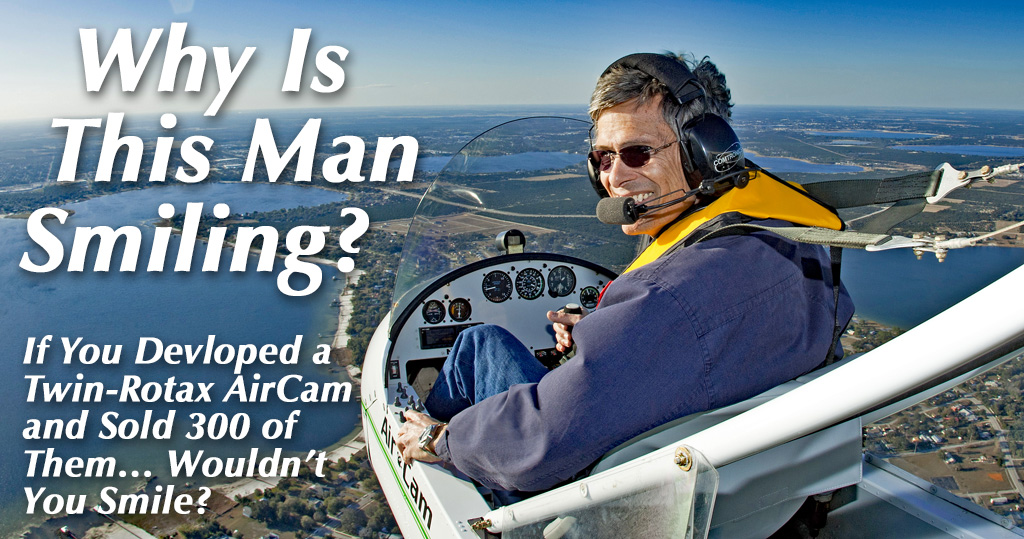
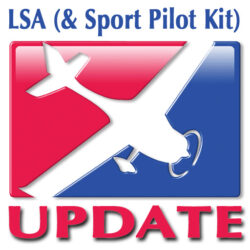 Summer is fast approaching and for much of the northern hemisphere, that means seaplane flying. For all pilots, covid fear is dissipating and summer skies beckon.
In this LSA Update…
Summer is fast approaching and for much of the northern hemisphere, that means seaplane flying. For all pilots, covid fear is dissipating and summer skies beckon.
In this LSA Update…
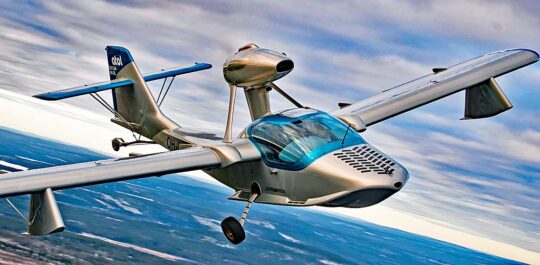 A new enterprise bought all rights and assests from bankruptcy estate of Atol Avion Oy, which filed for bankruptcy on February 2, 2021.
A new enterprise bought all rights and assests from bankruptcy estate of Atol Avion Oy, which filed for bankruptcy on February 2, 2021.
 Aurora, a two-seat amphibian, has been under development for nine years. Scandinavian Seaplanes forecasts serial production will start by the end of Q2 2022. A core team familiar with Atol Avion has been hired to work for company and this will enable the official transfer of the nearly finished type certification project with EASA (European Aviation Safety Agency, the Union's counterpart to FAA).
Aurora, a two-seat amphibian, has been under development for nine years. Scandinavian Seaplanes forecasts serial production will start by the end of Q2 2022. A core team familiar with Atol Avion has been hired to work for company and this will enable the official transfer of the nearly finished type certification project with EASA (European Aviation Safety Agency, the Union's counterpart to FAA).
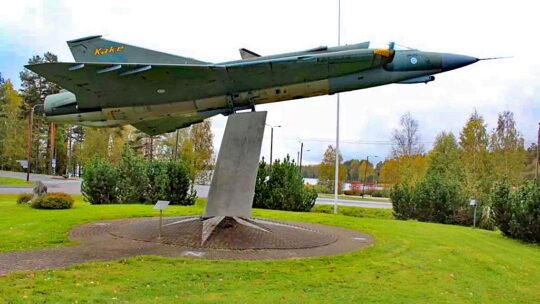
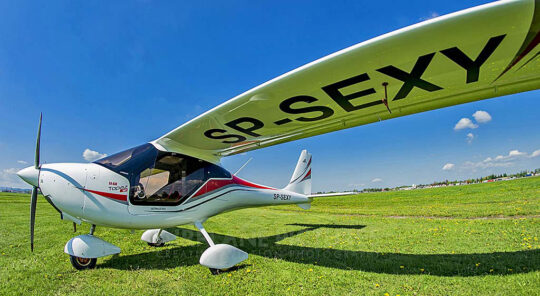 The Polish company's top-of-the-line
The Polish company's top-of-the-line 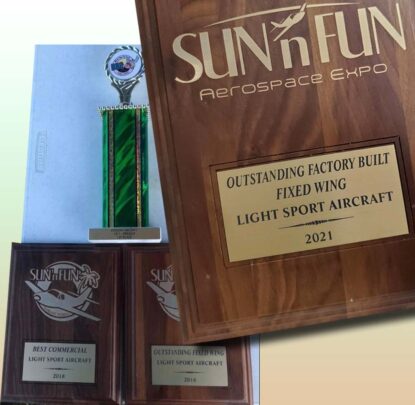 Get factory
Get factory 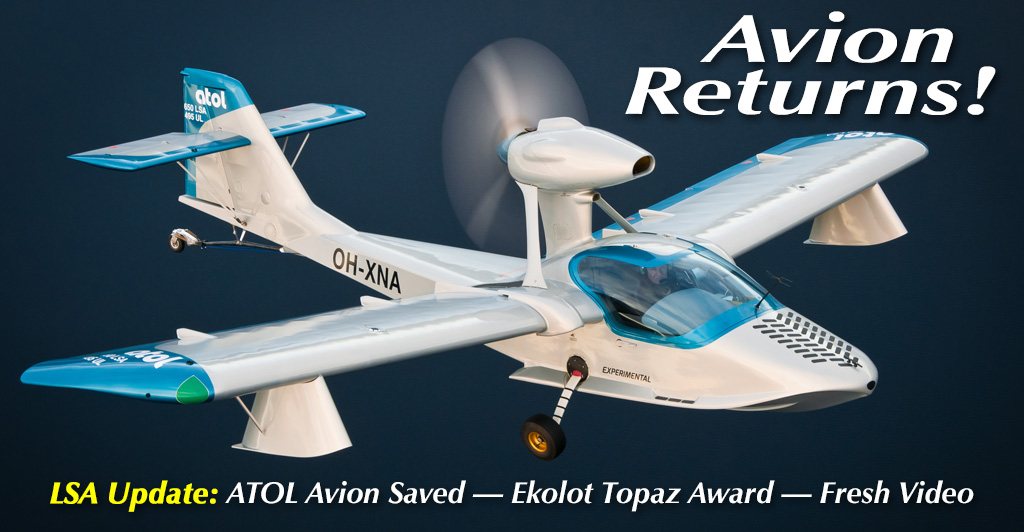
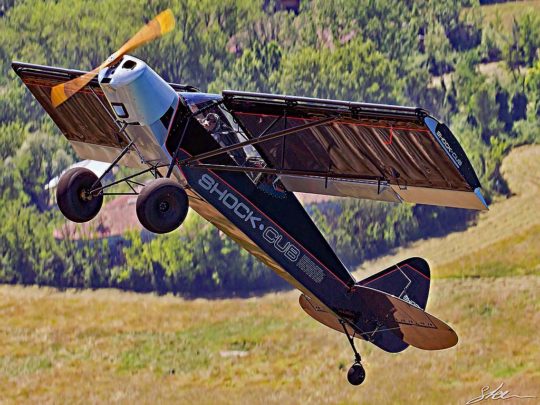 Here's the simple response: light aircraft with modern (read: powerful and efficient) engines tend to perform admirably well in high elevations, higher heat, and high humidity. If you fly almost any of these aircraft in high density conditions you already know they perform sprightly.
In contrast, I logged hundreds of Cessna 150 hours from my days as a flight instructor, and — with a similar amount of power as most LSA but also quite a few more pounds — that aircraft definitely does not perform as energetically.
So, a higher power-to-weight ratio is good, but do limits exist?
Here's the simple response: light aircraft with modern (read: powerful and efficient) engines tend to perform admirably well in high elevations, higher heat, and high humidity. If you fly almost any of these aircraft in high density conditions you already know they perform sprightly.
In contrast, I logged hundreds of Cessna 150 hours from my days as a flight instructor, and — with a similar amount of power as most LSA but also quite a few more pounds — that aircraft definitely does not perform as energetically.
So, a higher power-to-weight ratio is good, but do limits exist?
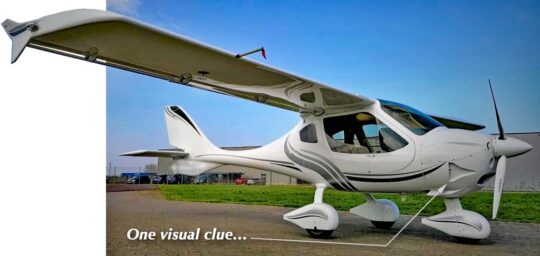
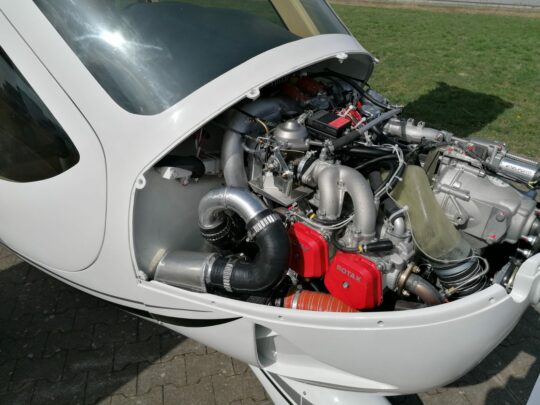 “I was very impressed with the performance of the CTLS GT with the Rotax 914 Turbo," said Flight Design test pilot Nico Stambula. "CTLS GT Turbo climbs like a rocket and easily reaches 140 knots at altitude." Stambula added that the 914 intercooled engine maintains consistent temperatures. In addition, this is a very smooth flying package."
The first CTLS GT will be shipped to an owner in South Africa, which has both high temperatures and high elevations. Flight Design believes the new model "should be just great for operating in those more challenging conditions."
With the addition of the Rotax 914T option, the long-running CTLS extends its range again. Various models are available as a European 600 kilogram (European) Ultralight, an ASTM-compliant Special LSA, or as an EASA-certified aircraft. Models are available with the Rotax 912, the 912iS and now as a turbocharged performer as the CTLS GT 914T.
“I was very impressed with the performance of the CTLS GT with the Rotax 914 Turbo," said Flight Design test pilot Nico Stambula. "CTLS GT Turbo climbs like a rocket and easily reaches 140 knots at altitude." Stambula added that the 914 intercooled engine maintains consistent temperatures. In addition, this is a very smooth flying package."
The first CTLS GT will be shipped to an owner in South Africa, which has both high temperatures and high elevations. Flight Design believes the new model "should be just great for operating in those more challenging conditions."
With the addition of the Rotax 914T option, the long-running CTLS extends its range again. Various models are available as a European 600 kilogram (European) Ultralight, an ASTM-compliant Special LSA, or as an EASA-certified aircraft. Models are available with the Rotax 912, the 912iS and now as a turbocharged performer as the CTLS GT 914T.
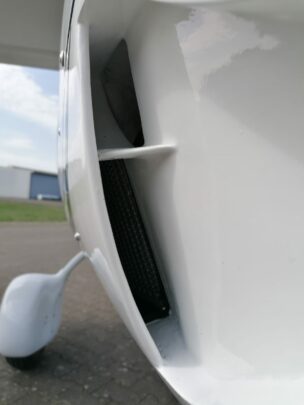 Someone was bound to ask why engineers didn't use the newest 141-horsepower Rotax 915 iS, so I queried the company on this question.
Since the start of Light-Sport Aircraft, Flight Design has been represented in America by Tom Peghiny, proprietor of
Someone was bound to ask why engineers didn't use the newest 141-horsepower Rotax 915 iS, so I queried the company on this question.
Since the start of Light-Sport Aircraft, Flight Design has been represented in America by Tom Peghiny, proprietor of 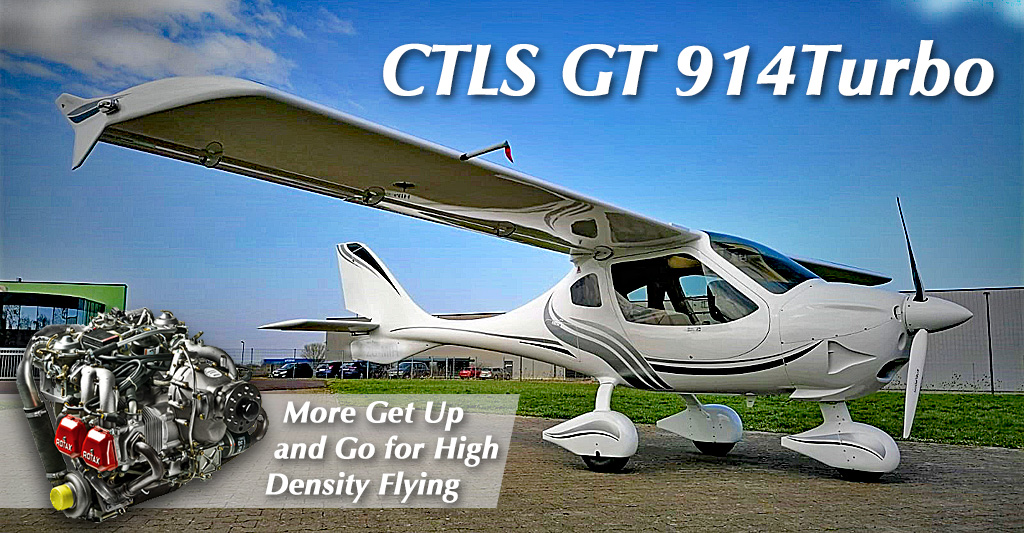
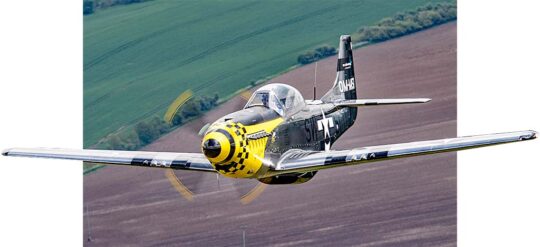 Don't feel too conspicuous. It's happening to me, too, along with nearly everyone else. [
Don't feel too conspicuous. It's happening to me, too, along with nearly everyone else. [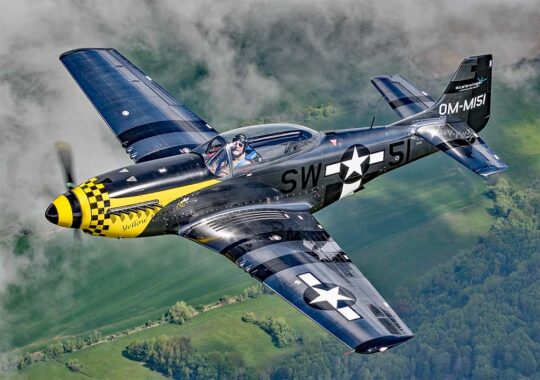 ScaleWings reported, "Aircraft serial number #001 took off at 11:37 am into a light cloudy sky." The all-important first flight went without problems.
"Chief Test Pilot Jirko 'Jiri' Hybler praised the balanced and highly maneuverable handling of the aircraft, managing crosswinds of more than 10 knots with superior control," continued ScaleWings. "Within the first flight hours all systems were checked to prove their functionality."
The company reported test flights included cycling up and down of the all-electrically-driven landing gear. First flight went exactly to plan and 35 minutes later, the aircraft landed safely.
"This first flight of the serial aircraft configuration of the SW-51 Mustang is an important milestone for our team," ScaleWings said.
The SW-51 aircraft program was launched in 2013, followed by a successful first flight of a “proof of concept” prototype just one year later in 2014. Since then ScaleWings has been working on both production processes for the aircraft and preparing the company's production site in Krosno, Poland.
ScaleWings reported, "Aircraft serial number #001 took off at 11:37 am into a light cloudy sky." The all-important first flight went without problems.
"Chief Test Pilot Jirko 'Jiri' Hybler praised the balanced and highly maneuverable handling of the aircraft, managing crosswinds of more than 10 knots with superior control," continued ScaleWings. "Within the first flight hours all systems were checked to prove their functionality."
The company reported test flights included cycling up and down of the all-electrically-driven landing gear. First flight went exactly to plan and 35 minutes later, the aircraft landed safely.
"This first flight of the serial aircraft configuration of the SW-51 Mustang is an important milestone for our team," ScaleWings said.
The SW-51 aircraft program was launched in 2013, followed by a successful first flight of a “proof of concept” prototype just one year later in 2014. Since then ScaleWings has been working on both production processes for the aircraft and preparing the company's production site in Krosno, Poland.
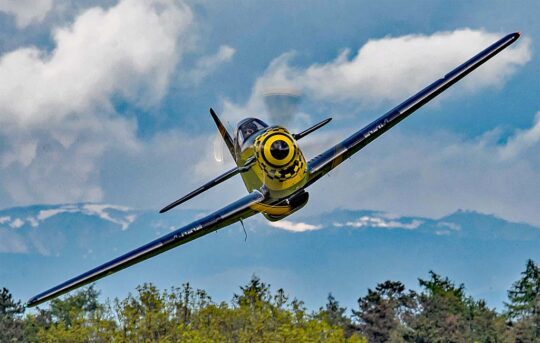 The ScaleWings SW-51 Mustang is a true-to-scale high performance replica modeled precisely upon the original North American P-51 Mustang aircraft dimension but fully built from carbon fiber.
No question, SW-51 deserves the closest possible examination. This is an amazing construction.
SW-51 is an intricate eye-catcher featuring more than 100,000 details such as simulated rivets, screws, fabric and more that were meticulously handcrafted into the manufacturing molds. Even when you physically touch them, rivets and screw heads feel real. They're not; it's a marvelous illusion.
Schoeller's unique treatment combines with a high quality chrome-like finish, allowing SW-51 to almost-identically mirror the original's aluminum appeal. Without a doubt, this is an unprecedented execution beyond anything I've ever seen.
The aircraft is designed for up to 750 kilograms (1,653 pounds) gross weight, while it is currently being flown in a category limited to 600 kilograms (1,320 pounds) in accordance with prevailing European standards. The numbers show SW-51 could fit nicely into FAA's proposed Light Personal Aircraft but it could also stay a Light-Sport Aircraft. A fixed gear, fixed pitch prop version has been in discussion for some time.
The ScaleWings SW-51 Mustang is a true-to-scale high performance replica modeled precisely upon the original North American P-51 Mustang aircraft dimension but fully built from carbon fiber.
No question, SW-51 deserves the closest possible examination. This is an amazing construction.
SW-51 is an intricate eye-catcher featuring more than 100,000 details such as simulated rivets, screws, fabric and more that were meticulously handcrafted into the manufacturing molds. Even when you physically touch them, rivets and screw heads feel real. They're not; it's a marvelous illusion.
Schoeller's unique treatment combines with a high quality chrome-like finish, allowing SW-51 to almost-identically mirror the original's aluminum appeal. Without a doubt, this is an unprecedented execution beyond anything I've ever seen.
The aircraft is designed for up to 750 kilograms (1,653 pounds) gross weight, while it is currently being flown in a category limited to 600 kilograms (1,320 pounds) in accordance with prevailing European standards. The numbers show SW-51 could fit nicely into FAA's proposed Light Personal Aircraft but it could also stay a Light-Sport Aircraft. A fixed gear, fixed pitch prop version has been in discussion for some time.
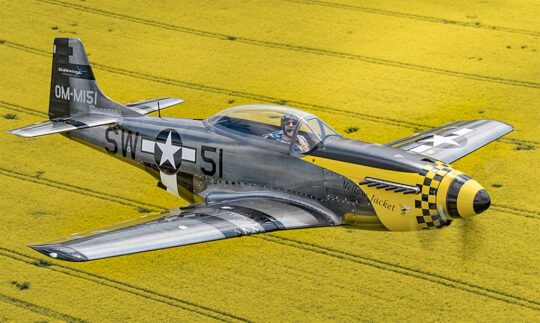 With first flight in its logbook, ScaleWings said, "We will produce and deliver 5 aircraft in 2021 and 12 aircraft in 2022."
SW-51's configuration features a
With first flight in its logbook, ScaleWings said, "We will produce and deliver 5 aircraft in 2021 and 12 aircraft in 2022."
SW-51's configuration features a 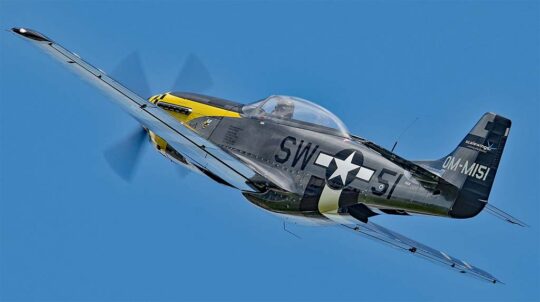 "SW-51 Mustang costs less than 10% to acquire, less than 1% to maintain and it burns less than 15% of the fuel of an original North American P-51 Mustang aircraft. That's a big savings but this is not an inexpensive kit.
"SW-51 Mustang costs less than 10% to acquire, less than 1% to maintain and it burns less than 15% of the fuel of an original North American P-51 Mustang aircraft. That's a big savings but this is not an inexpensive kit.
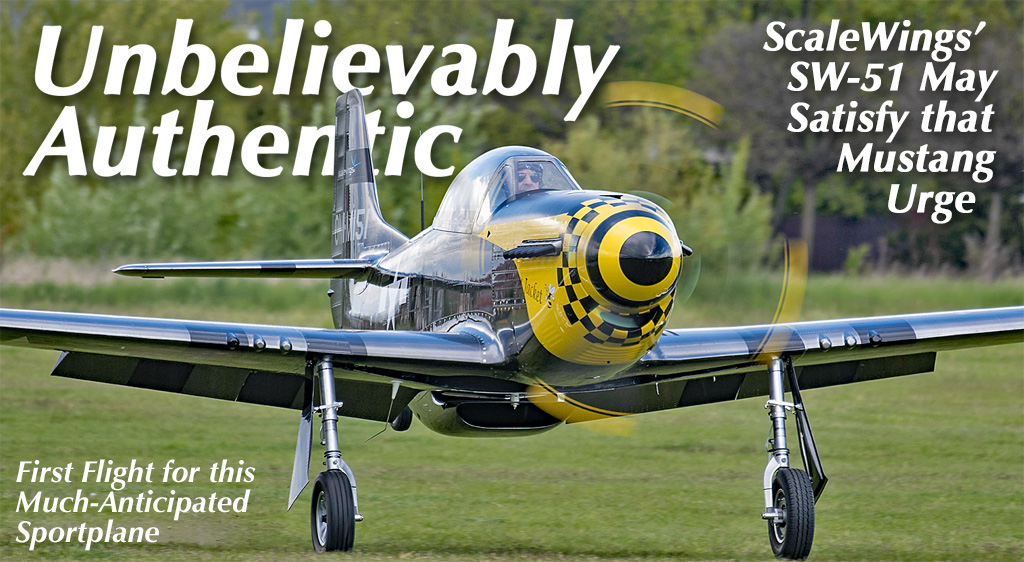
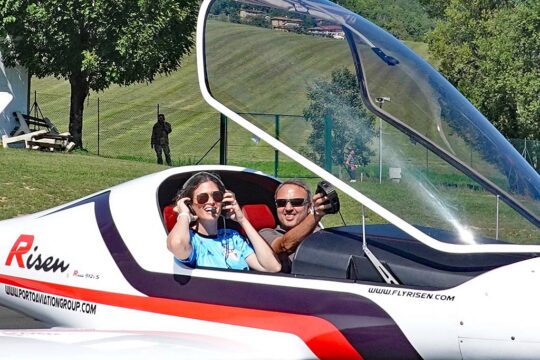
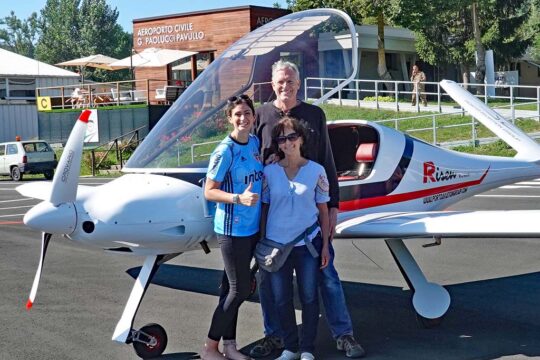
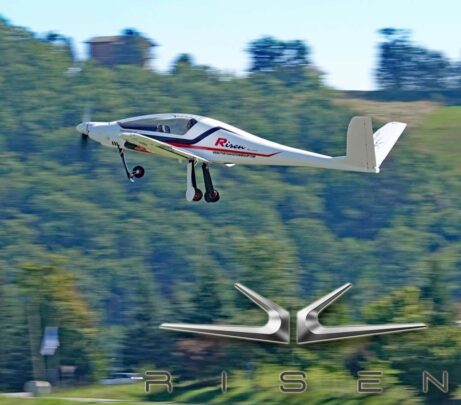
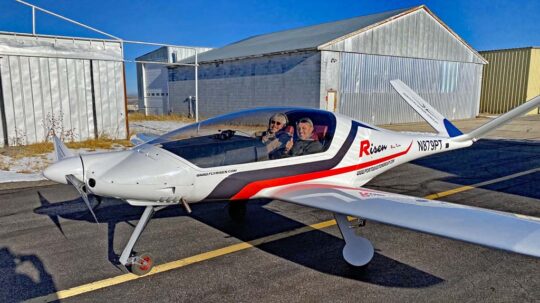
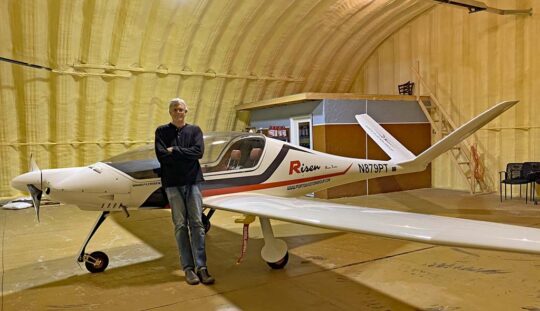
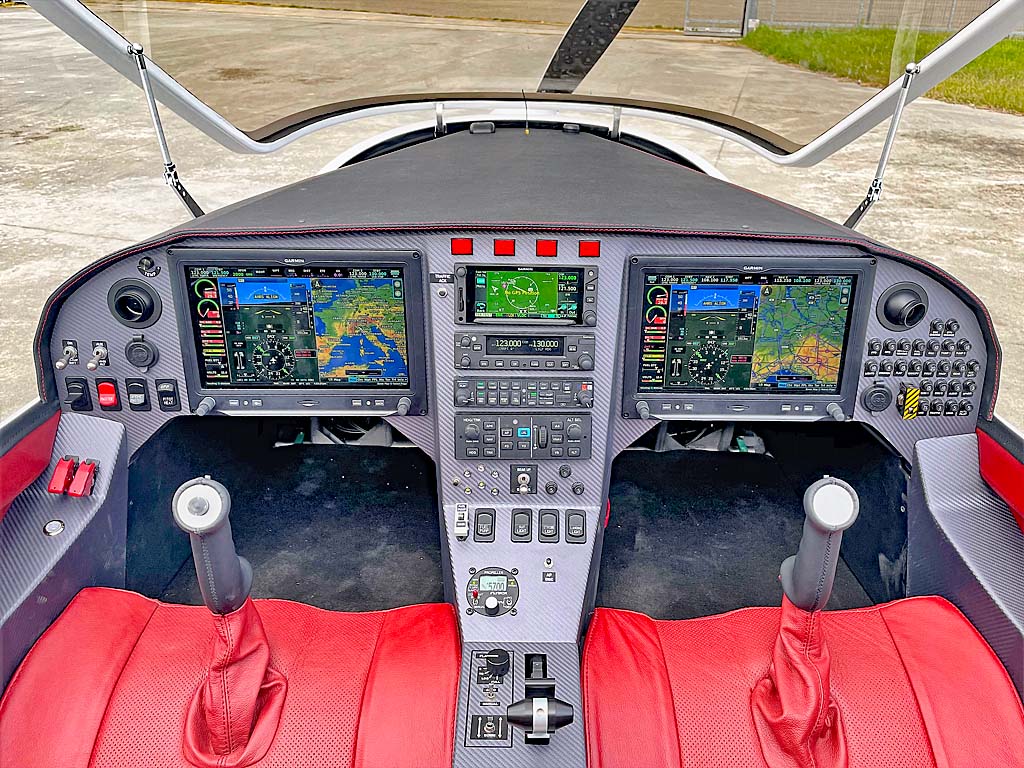
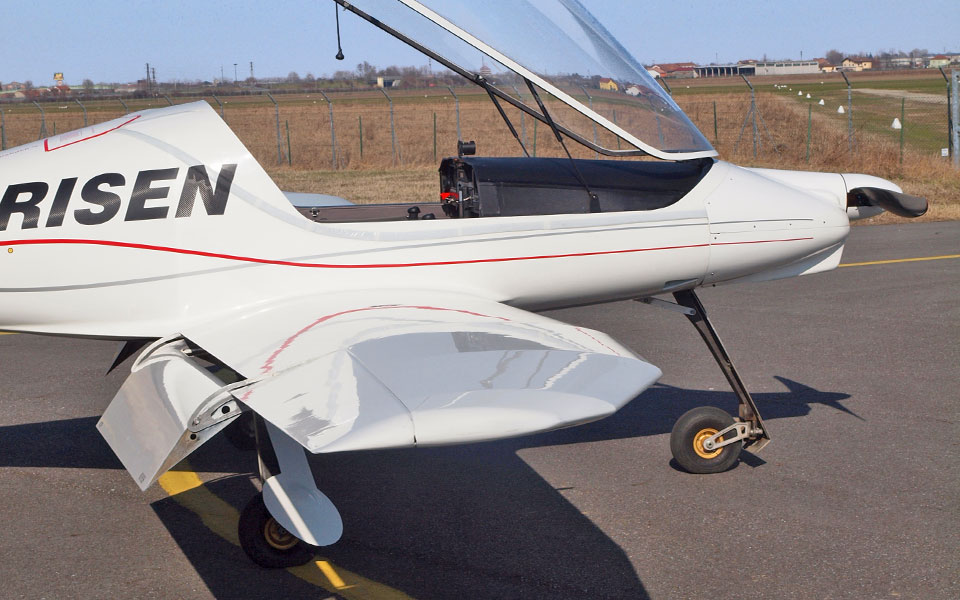

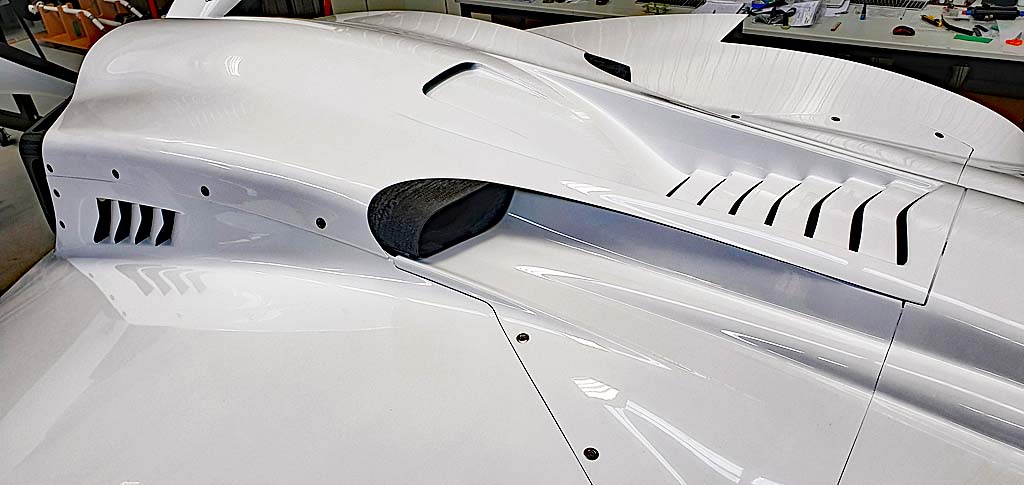 Look out, Icon A5! Here comes Wave and it should be quite exciting.
Designer Paul Vickers (see video interview below) has a history in boat-hull design. This history forms a logical path to a LSA seaplane with its boat hull and water control features. Paul employed that experience but has widened his history to encompass a flying boat, the Wave.
From the images that accompany this article, you may see a artist's sense of style, an engineer's focus on efficiency, and a creator's close attention to detail. I think these fresh photos convey those qualities quite well.
Look out, Icon A5! Here comes Wave and it should be quite exciting.
Designer Paul Vickers (see video interview below) has a history in boat-hull design. This history forms a logical path to a LSA seaplane with its boat hull and water control features. Paul employed that experience but has widened his history to encompass a flying boat, the Wave.
From the images that accompany this article, you may see a artist's sense of style, an engineer's focus on efficiency, and a creator's close attention to detail. I think these fresh photos convey those qualities quite well.
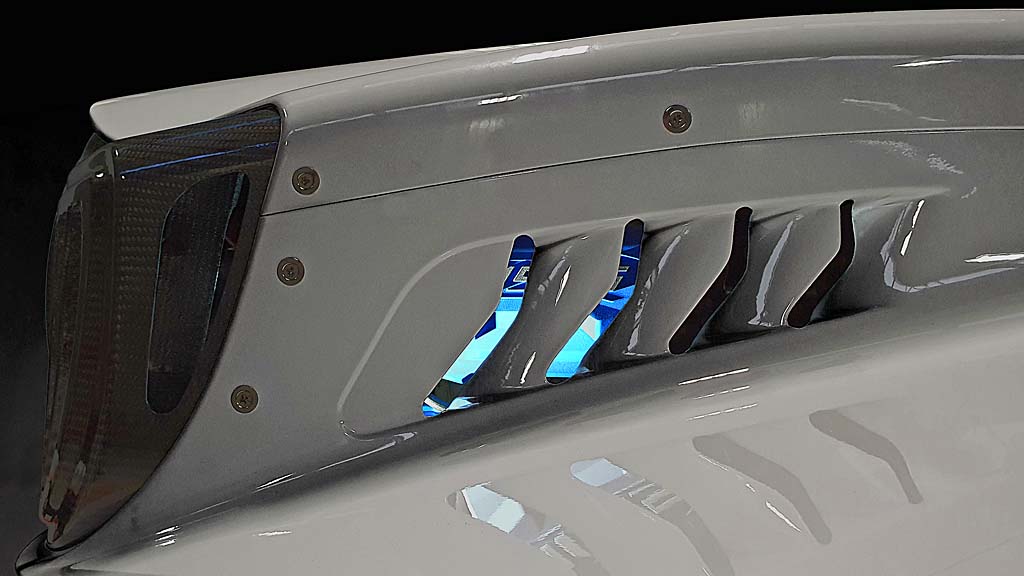 In one image you notice the Rotax 915iS hiding inside its shapely engine nacelle.
Over the years, Wave has evaluated different engines. At one time, they contemplated
In one image you notice the Rotax 915iS hiding inside its shapely engine nacelle.
Over the years, Wave has evaluated different engines. At one time, they contemplated 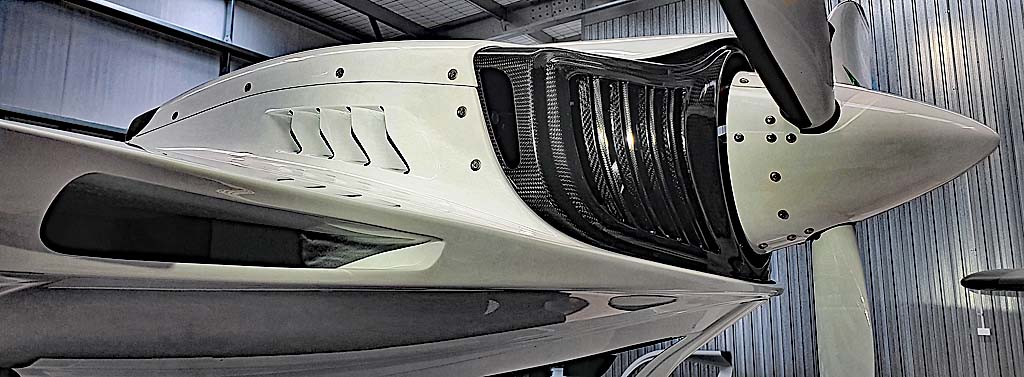 First flight is ahead — though this is one of those nailing-jello-to-a-wall stories. First flight is something a designer never wishes to rush. Yet after all the time spent working on this design, the desire to see Wave go aloft must be tremendous — not even considering what pressure those waiting for the design may be exerting.
Paul and his Vickers team have worked hard, not only to make a dashing design but creating one that is easier to build. Vickers reports their total part count is a fraction of Icon's for the A5, which should translate into quicker, easier, surer building and that in turn may help the New Zealand company keep their prices well below A5's. Wave is composed of around 400 parts where Vickers said 1,800 or more parts is more common. Each part adds a material and labor cost.
In another photo, you can see a door leaning up against the hangar wall. Reportedly, Wave will use an aft-sliding door to enter a rather spacious compartment.
First flight is ahead — though this is one of those nailing-jello-to-a-wall stories. First flight is something a designer never wishes to rush. Yet after all the time spent working on this design, the desire to see Wave go aloft must be tremendous — not even considering what pressure those waiting for the design may be exerting.
Paul and his Vickers team have worked hard, not only to make a dashing design but creating one that is easier to build. Vickers reports their total part count is a fraction of Icon's for the A5, which should translate into quicker, easier, surer building and that in turn may help the New Zealand company keep their prices well below A5's. Wave is composed of around 400 parts where Vickers said 1,800 or more parts is more common. Each part adds a material and labor cost.
In another photo, you can see a door leaning up against the hangar wall. Reportedly, Wave will use an aft-sliding door to enter a rather spacious compartment.
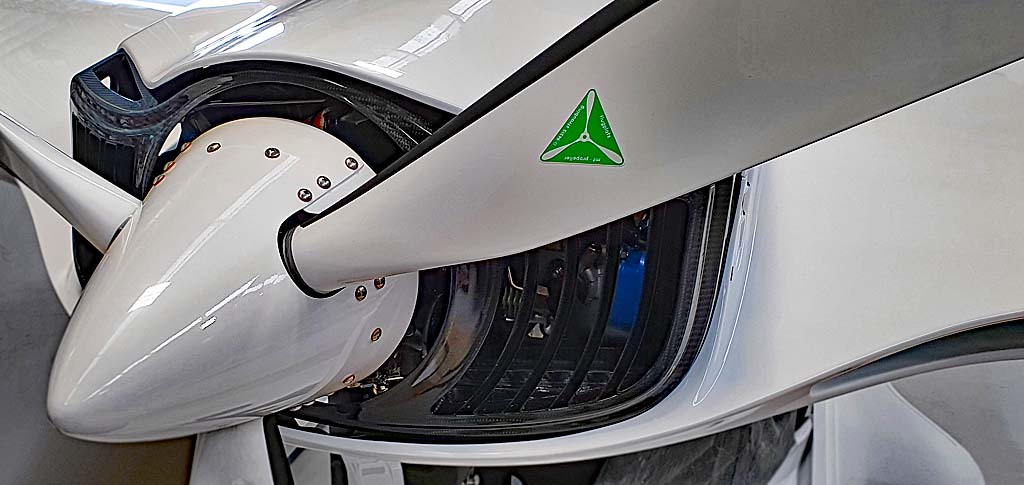 Wave also planned to use a novel arrangement of main gear — called "CrossOver" gear — such that it could handle the expected duties without needing to be retracted. Until the company gets first flight in their logbook, they're concentrating on the essentials so it's too early for confirmation of specific features.
Despite the uncertainties, Paul Vickers planned the design so meticulously that the first flight aircraft looks highly finished and not the sort of roughed-out prototype that often flies as a "proof-of-concept." If Paul achieves what I think he might with this impressive aircraft, the POC first-flight example might end up being very similar to the production aircraft that will follow.
Wave also planned to use a novel arrangement of main gear — called "CrossOver" gear — such that it could handle the expected duties without needing to be retracted. Until the company gets first flight in their logbook, they're concentrating on the essentials so it's too early for confirmation of specific features.
Despite the uncertainties, Paul Vickers planned the design so meticulously that the first flight aircraft looks highly finished and not the sort of roughed-out prototype that often flies as a "proof-of-concept." If Paul achieves what I think he might with this impressive aircraft, the POC first-flight example might end up being very similar to the production aircraft that will follow.
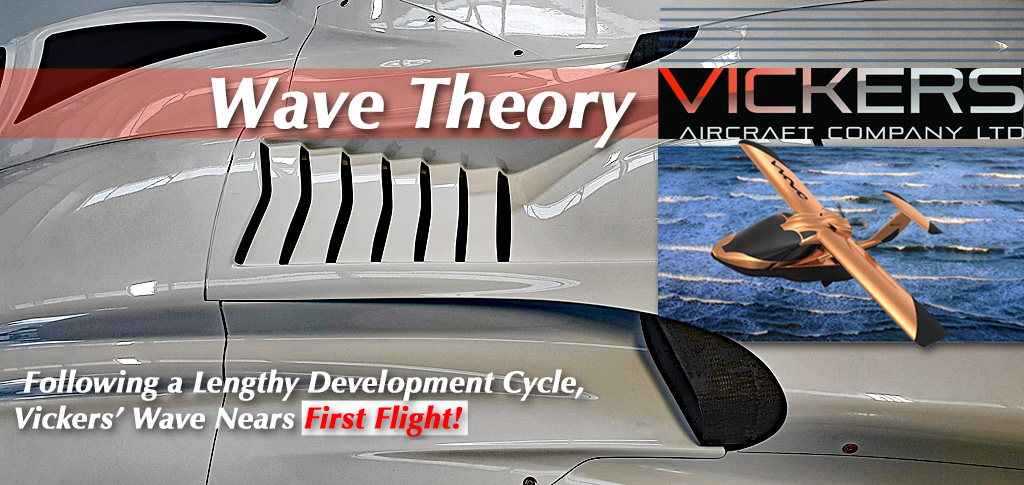
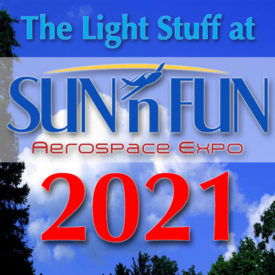 We continue with further coverage from the first major airshow in almost two years… THANKS to
We continue with further coverage from the first major airshow in almost two years… THANKS to 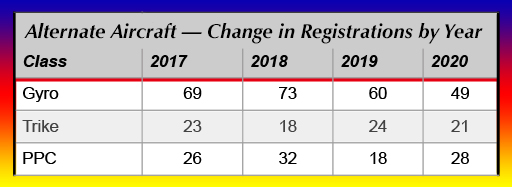 Counting all types, the "alternative aircraft" sector may account for a quarter or more of all LSA sales. Alternative aircraft have attributes that drive customer inquiries: better affordability and unique flying qualities.
Not interested in alternative aircraft? That's hardly surprising as most American pilots were trained in conventional, three-axis, tractor-engined aircraft, usually with a control wheel and rudder pedals. Most of those pilots will stick with a familiar configuration and therefore the LSA market caters to that large pilot community. Others yearn for something different or something more affordable.
Counting all types, the "alternative aircraft" sector may account for a quarter or more of all LSA sales. Alternative aircraft have attributes that drive customer inquiries: better affordability and unique flying qualities.
Not interested in alternative aircraft? That's hardly surprising as most American pilots were trained in conventional, three-axis, tractor-engined aircraft, usually with a control wheel and rudder pedals. Most of those pilots will stick with a familiar configuration and therefore the LSA market caters to that large pilot community. Others yearn for something different or something more affordable.
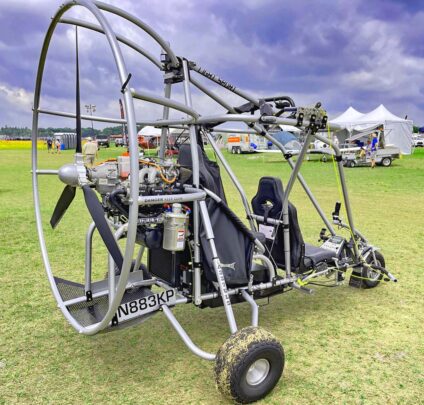 Powrachute Powerhouse
Powrachute Powerhouse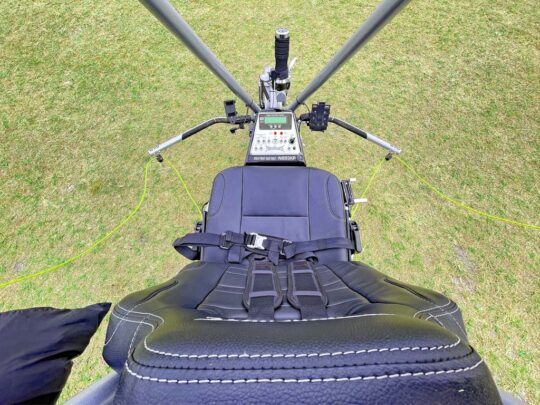
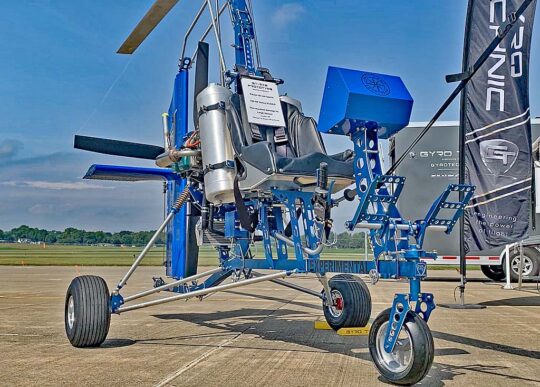 While the idea may have been invented many years ago in the USA, Europeans adopted the type in the 2000s and took the idea further. They also worked out flight characteristics to make these contemporary machines easier to fly. My experience with them (see this
While the idea may have been invented many years ago in the USA, Europeans adopted the type in the 2000s and took the idea further. They also worked out flight characteristics to make these contemporary machines easier to fly. My experience with them (see this 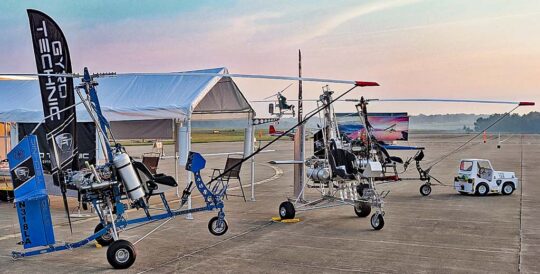 Those older American gyroplanes — think: Bensen Gyrocopter — were nearly all single seaters. Maybe that was best then, when stability was different than today. Then I discovered the VX1 at the Midwest LSA Expo. Hmmm, a modern gyroplane with all the present-day knowledge but in single seat form. Intriguing. It doesn't look like other modern gyros and the video below will explain.
Lots of buyers want a second seat for a friend or their spouse yet more often than not aircraft are flown solo. A single seat aircraft has some advantages and the pilot can merely enjoy him or herself without have to assure their passenger is comfortable. Single seaters can also cost less partly because they don't need as much engine.
Combine these attributes with some of the finest, beautifully-accented machine work you'll ever see and Gyro Technic truly has something in their VX1. Finally, the Minnesota company is rare in that it also makes its own rotor blades and can supply other producers.
Those older American gyroplanes — think: Bensen Gyrocopter — were nearly all single seaters. Maybe that was best then, when stability was different than today. Then I discovered the VX1 at the Midwest LSA Expo. Hmmm, a modern gyroplane with all the present-day knowledge but in single seat form. Intriguing. It doesn't look like other modern gyros and the video below will explain.
Lots of buyers want a second seat for a friend or their spouse yet more often than not aircraft are flown solo. A single seat aircraft has some advantages and the pilot can merely enjoy him or herself without have to assure their passenger is comfortable. Single seaters can also cost less partly because they don't need as much engine.
Combine these attributes with some of the finest, beautifully-accented machine work you'll ever see and Gyro Technic truly has something in their VX1. Finally, the Minnesota company is rare in that it also makes its own rotor blades and can supply other producers.
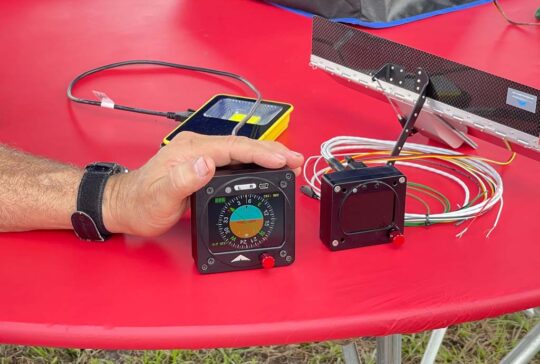 Levil Aviation greatly empowered the role of tablets in the cockpit today by pioneering the first iPad-compatible wireless avionics suite in 2009. Today's
Levil Aviation greatly empowered the role of tablets in the cockpit today by pioneering the first iPad-compatible wireless avionics suite in 2009. Today's 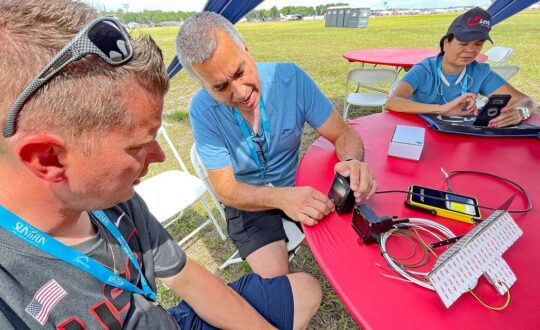
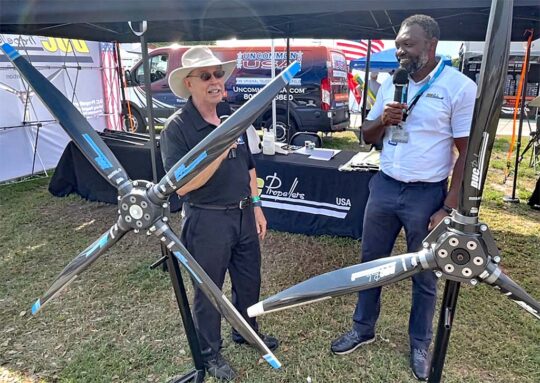 Duc Prop Success Story
Duc Prop Success Story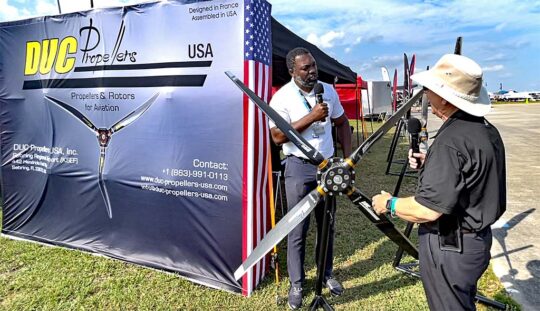 Of course, he is a sales and service outlet for Duc Hélices. Manufacturing occurs in Frontenas, France. According to Gaetan, the French enterprise is humming at its still-new
Of course, he is a sales and service outlet for Duc Hélices. Manufacturing occurs in Frontenas, France. According to Gaetan, the French enterprise is humming at its still-new 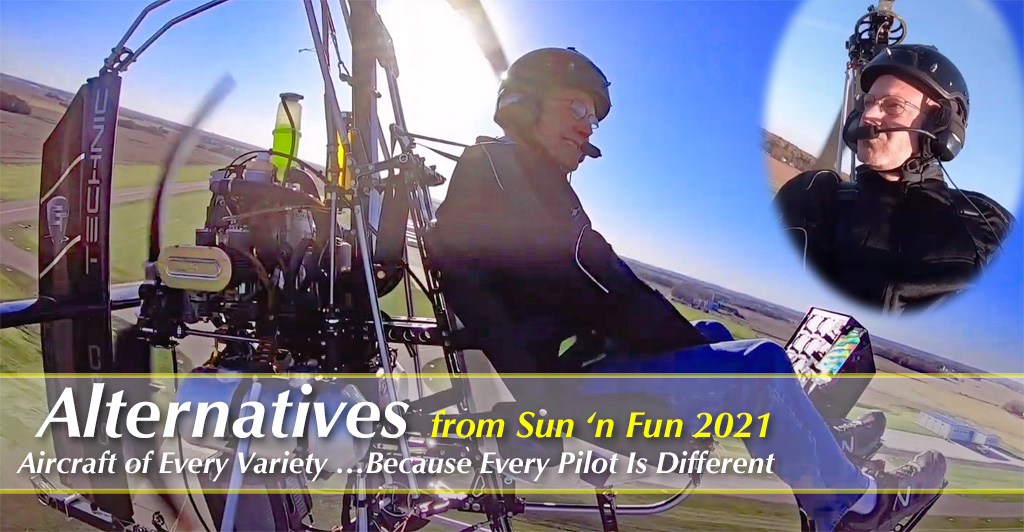
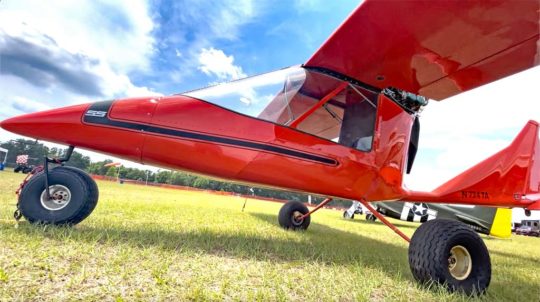 Before longtime proprietor John Williams began producing his own design, he manufactured components and sub-asssemblies for another hot ultralight of the day,
Before longtime proprietor John Williams began producing his own design, he manufactured components and sub-asssemblies for another hot ultralight of the day, 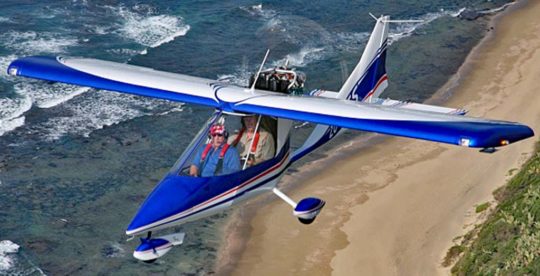 To make harder-working wings, John did something rather unusual at the time. He built a cantilevered wing with conventional aluminum structure. The result: that single place aircraft worked great with a 20-foot wing span. When I flew it, the wings seemed so short that I felt I could reach out with my arms and almost touch the tips.
John also noted that the tauter wing structure made the aircraft more responsive in handling. Tornado could and still can do loops and rolls with ease …in experienced hands, of course. I don't want to encourage anyone to do aerobatics without proper instruction.
To make harder-working wings, John did something rather unusual at the time. He built a cantilevered wing with conventional aluminum structure. The result: that single place aircraft worked great with a 20-foot wing span. When I flew it, the wings seemed so short that I felt I could reach out with my arms and almost touch the tips.
John also noted that the tauter wing structure made the aircraft more responsive in handling. Tornado could and still can do loops and rolls with ease …in experienced hands, of course. I don't want to encourage anyone to do aerobatics without proper instruction.
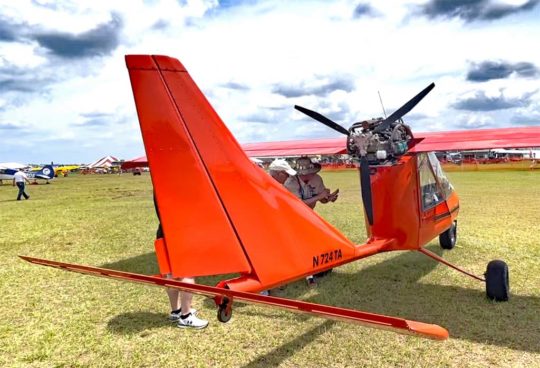 Titan went further on their website. "Combined with Titan Aircraft's renowned reputation for high quality products, superior aircraft performance, and outstanding customer support, Tornado is sure to provide the pilot and kit builder a very pleasurable experience and a fantastic resale value."
Obviously, Team Titan is proud of their achievement and, in support of those claims, more than 800 are flying, John reported at Sun 'n Fun 2021.
"I do spend more time with our T-51 these days but every time I take someone up in Tornado, I always get out with a smile on my face." As he said the words, his smile broaded with the memory.
Titan went further on their website. "Combined with Titan Aircraft's renowned reputation for high quality products, superior aircraft performance, and outstanding customer support, Tornado is sure to provide the pilot and kit builder a very pleasurable experience and a fantastic resale value."
Obviously, Team Titan is proud of their achievement and, in support of those claims, more than 800 are flying, John reported at Sun 'n Fun 2021.
"I do spend more time with our T-51 these days but every time I take someone up in Tornado, I always get out with a smile on my face." As he said the words, his smile broaded with the memory.
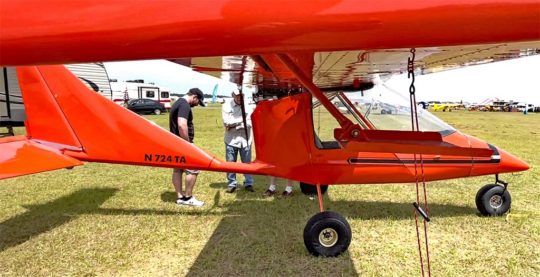
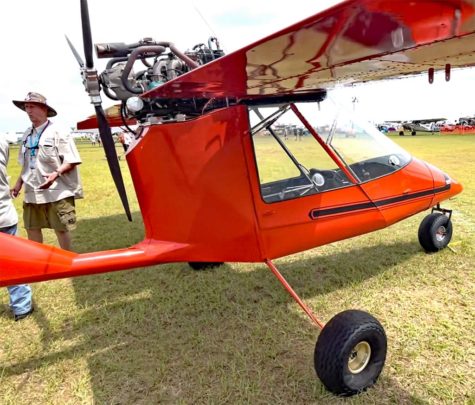 "Our kit has an estimated build time of 150-300 hours and includes all required materials, components, and fasteners," said John. Kits do not include engine, propeller, and instruments leaving that to customer preferences. "Our completion rate is around 90% because the build is fairly quick and easy — and because customers are motivated to get flying," John added.
"Tornado models combine friendly low-speed handling characteristics with agility and high performance," Titan observed on their website. Tornado I is designed to a +6g / -4g load limit capability at 750 pounds gross weight. With a Rotax 503 engine, cruise speed is in excess of 95 mph. The stall speed in landing configuration flying solo is 30 mph.
"Our kit has an estimated build time of 150-300 hours and includes all required materials, components, and fasteners," said John. Kits do not include engine, propeller, and instruments leaving that to customer preferences. "Our completion rate is around 90% because the build is fairly quick and easy — and because customers are motivated to get flying," John added.
"Tornado models combine friendly low-speed handling characteristics with agility and high performance," Titan observed on their website. Tornado I is designed to a +6g / -4g load limit capability at 750 pounds gross weight. With a Rotax 503 engine, cruise speed is in excess of 95 mph. The stall speed in landing configuration flying solo is 30 mph.
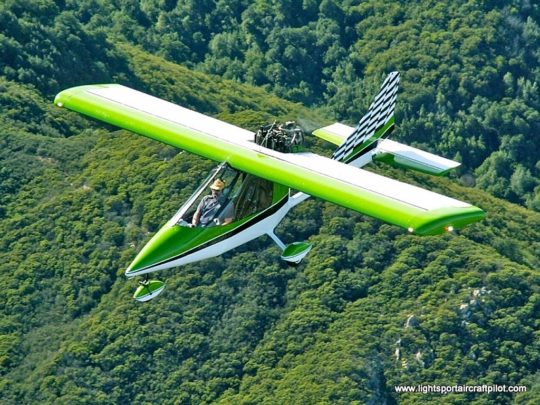 The Tornado SS comes with a longer & taller fuselage, a 33% larger back door, a full-sized rear seat, and has four more inches of headroom over a standard Tornado II. Most use the
The Tornado SS comes with a longer & taller fuselage, a 33% larger back door, a full-sized rear seat, and has four more inches of headroom over a standard Tornado II. Most use the 